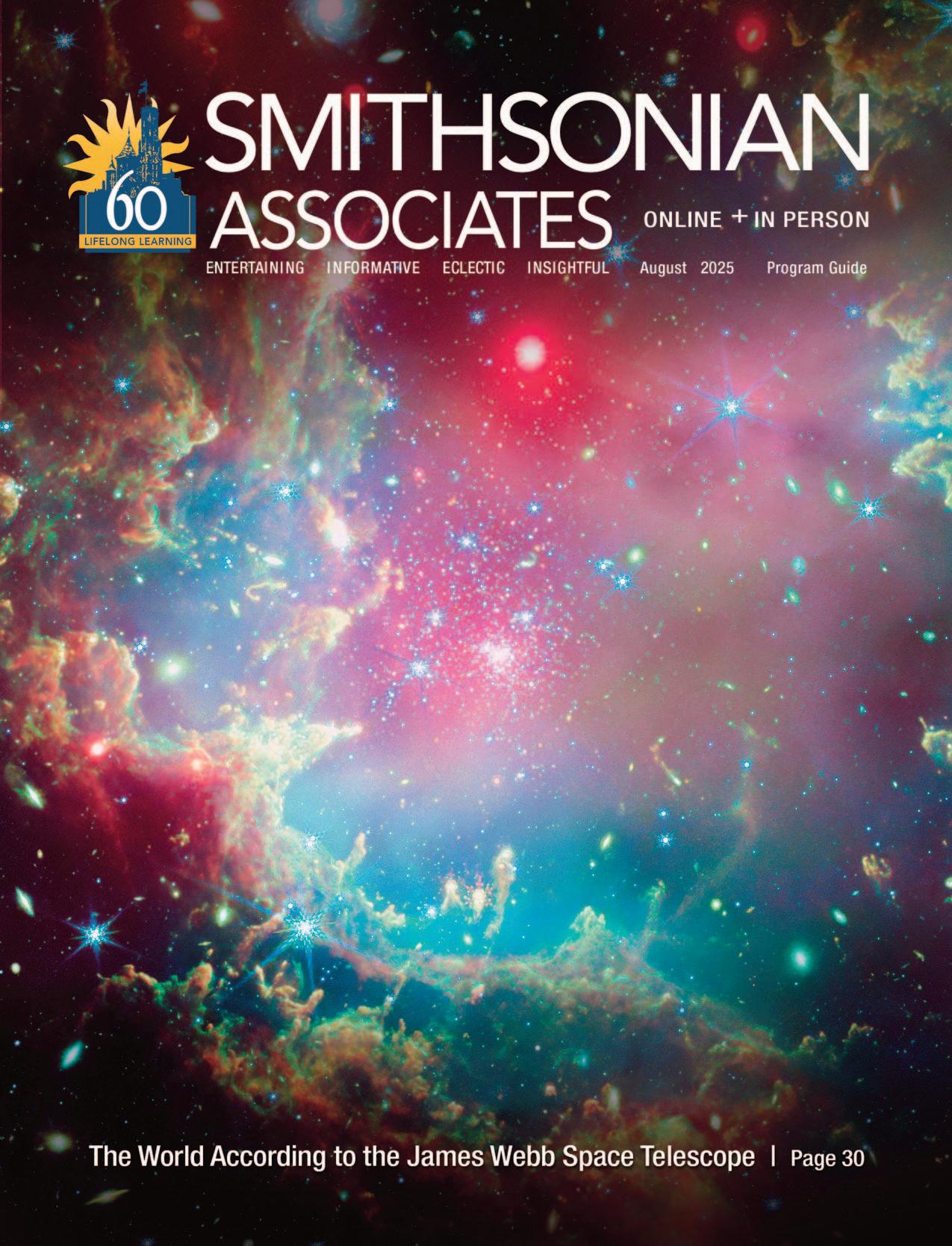
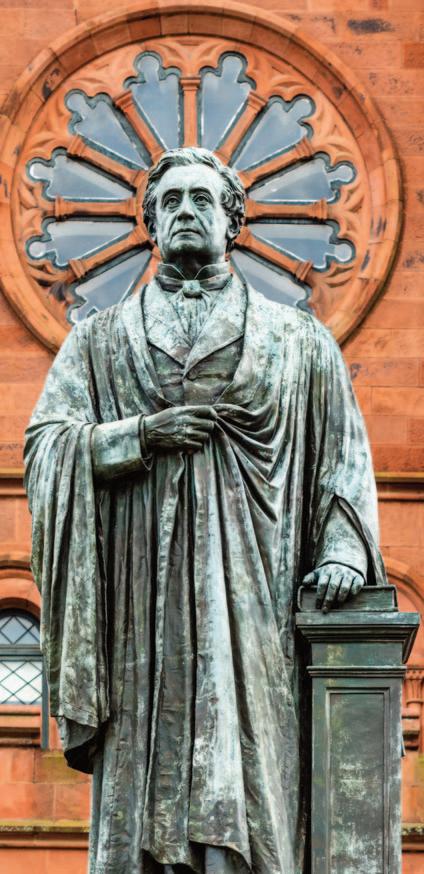
After attending my first lecture at Smithsonian Associates, I was hooked. I'm proud to help ensure Associates can thrive for decades to come in a way that makes sense for my family and finances as a Legacy Society member.
“ “
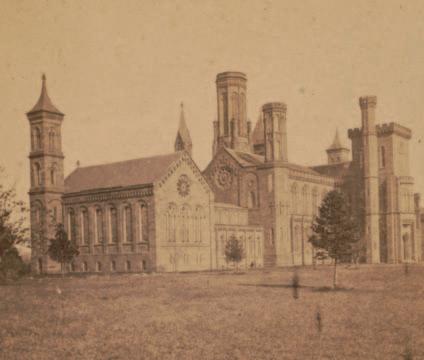



After attending my first lecture at Smithsonian Associates, I was hooked. I'm proud to help ensure Associates can thrive for decades to come in a way that makes sense for my family and finances as a Legacy Society member.
“ “

In the 1830s, a gift from a single benefactor led to the birth of the Smithsonian. Today, you can share the same visionary spirit and generosity embodied by James Smithson by becoming a founding member of the Associates Legacy Society.
Smithson saw the new institution as a place uniquely dedicated to learning. And from its founding 60 years ago, Smithsonian Associates has been committed to the same goal: creating opportunities for learning for people of all ages.
Your own legacy gift—of any size—will ensure that we are able to continue that vital work for current and future generations. And at the same time, you’ll be able to take advantage of income and tax benefits for yourself and your heirs.
By joining the Associates Legacy Society you can:
• Specifically designate your gift to support Smithsonian Associates.
• Retain control of your assets during your lifetime.
• Change your beneficiaries at any time.
• Provide for the people in your life.
• Make a gift in honor or memory of a loved one.
Members also receive invitations to special programs and Smithsonian Associates learning experiences.
We invite you to connect with us and learn more about how planned giving through the Associates Legacy Society can play a significant role in your future—and ours.
Please contact Elizabeth Moloney, Director of Advancement, at (202) 633-8697 or DonorServices@si.edu.
It may be the height of summer, but at Smithsonian Associates our eyes and energies are focused on fall— specifically Friday, October 17 through Sunday, October 19. Mark your calendar for a festive weekend celebrating 60 years of entertaining, informative, eclectic, and insightful learning opportunities from the world’s largest museum-based education program. Whether you're a longtime member or friend, a member-to-be, or someone curious to experience the wonders of the Smithsonian, you're invited to enjoy a rich mix of in-person and online events. You’ll find the full list of offerings beginning on p. 2.
The events for this diamond anniversary include a sparkling gathering on Friday evening, followed by Saturday lectures from a range of expert presenters. Topics include an intimate look at influential figures in American history; a survey (and taste) of the distinctive cuisine of Emilia-Romagna; the science and strategies behind living a longer, healthier life; an analysis of the filmmaking genius of Alfred Hitchcock—and even an investigation into the unexpected connection between abstract art and pizza.


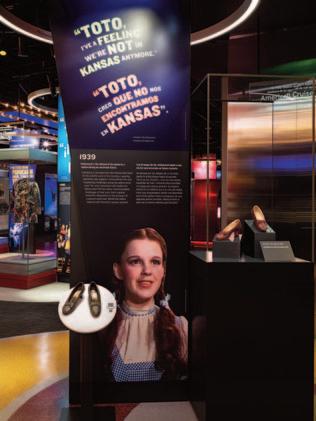

The weekend is an invitation to try studio arts classes, join an architectural walking tour of the National Mall, and find insights into iconic Smithsonian objects like the original model of the starship Enterprise, Judy Garland’s ruby slippers from The Wizard of Oz, and a dazzling array of fancy color diamonds from the Smithsonian’s unparalleled gem collection. The celebration’s finale is an online appearance by travel expert Rick Steves, who shares stories from his unforgettable journey along the legendary “Hippie Trail” from Istanbul to Kathmandu during the 1970s—a chance for recollection and learning, as we launch into the future.


It’s going to be a gem of a weekend—and your participation will make it shine even more brightly. We’re looking forward to celebrating with you online and in person on the National Mall!
Frederica R. Adelman, Director adelmanf@si.edu


2025



facebook.com/smithsonianassociates instagram.com/smithsonianassociates issuu.com/smithsonianassociatesprograms



After 60 years of informing, entertaining, and inspiring, it’s time for Smithsonian Associates to celebrate. And that’s what is happening the weekend of Friday, October 17, through Sunday, October 19.
The evening of activities on Friday sparkles—literally and figuratively—with both online and in-person events. They include a presentation on three of the Smithsonian’s most scintillating exhibits (see details below); the opportunity to enjoy a special 1960s-themed cocktail mixed by Philip Greene, co-founder of the Museum of the American Cocktail; a chance to exercise your artistic muscles by creating miniature paintings on glass and collage/mixed media; a cool photo op; a viewing of an illustrated timeline of Smithsonian Associates through the decades; and a light reception.
The first presentation of this celebratory weekend, How the Smithsonian Sparkles, highlights a studio model of the “Star Trek” starship Enterprise, rare colored diamonds, and ruby slippers from The Wizard of Oz
One of the most famous fictional voyages into space is that of the Enterprise, and the 11-foot-long model that starred in the original TV series now resides at the National Air and Space Museum. Space History department chair Margaret A. Weitekamp shares stories about how the museum recreated some of the starship’s Hollywood sparkle.
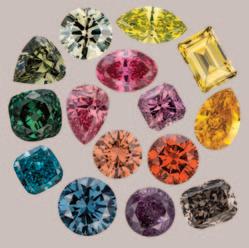
Fancy red diamonds, which are pure red, are among the rarest gems on Earth, and the National Museum of Natural History (NMNH) recently opened an exhibit focused on just such a sparkler: the Winston Red Diamond. Gabriela Farfan, NMNH curator of gems and minerals, delves into that diamond and its dazzling companions in the Winston Fancy Color Diamond Collection.


Several pairs of ruby slippers were made for Judy Garland to wear in The Wizard of Oz. A pair was donated to the National Museum of American History (NMAH) in 1979 and has been one of the most asked-about artifacts at the Smithsonian ever since. NMAH conservator Dawn Wallace illuminates the magic of these glittering slippers.
In Person: Celebration and presentation, Fri., Oct. 17, 6:30–8:30 p.m.; CODE 1T0-032; Ripley Center; Members $60; Nonmembers $75
Online: Presentation, Fri., Oct. 17, 6:30–7:30 p.m.; CODE 1T0-032; Members $20; Nonmembers $30
NOTE: After Saturday lectures with some of members’ favorite presenters and teachers, studio arts classes, and a Sunday-afternoon walking tour, the weekend closes that evening with an online lecture from travel expert Rick Steves, who shares stories from his journey along the legendary “Hippie Trail” from Istanbul to Kathmandu during the 1970s (see p. 4 for details).
Friday, October 17–Sunday, October 19 | SmithsonianAssociates.org/celebration
All programs are scheduled in Eastern Standard Time (EST)
Friday, October 17
Architecture on the Nation’s Front Lawn Walking Tour | 3–5:30 p.m.
Leader: Bill Keene
Members $55; Nonmembers $70 CODE 1CW-A01
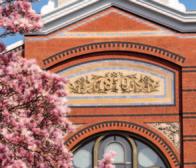
Saturday, October 18
Concourse Experiences
Ripley Center Concourse | 10 a.m.–5:30 p.m.

A Toast to Smithsonian Associates | In-Person and Online 60th Anniversary Celebration Event
Join in a weekend-long toast to the diamond anniversary of Smithsonian Associates.
A Toast to Smithsonian Associates
With Presentation: How the Smithsonian Sparkles 6:30–8:30 p.m. | CODE 1T0-032
In Person: Celebration and Presentation, Ripley Center; Members $60; Nonmembers $75
Online Presentation Only: 6:30–7:30 p.m.; Members $20; Nonmembers $30 (see p. 2 for a full program description)
Check in for programs and visit informational booths dedicated to all aspects of Smithsonian Associates. Light refreshments are available during the day.
Hour-long Lectures | In person and online

In–Person Celebration Activities | Ripley Center Concourse | 7:30–8:30 p.m.
• Light reception
• 1960s-themed signature cocktail with Philip Greene
• Drop-in Studio Arts: Miniature Paintings on Glass Collage and Mixed Media
• An illustrated timeline of Smithsonian Associates through the decades
• Step and repeat photo wall
• Meet Smithsonian Associates staff members

National Museum of the American Indian
The Visionary Genius of Frederick Douglass 10–11 a.m.
Presenter: Richard Bell
Members $20; Nonmembers $30; CODE 1M2-414
The Films of Alfred Hitchcock
11:30 a.m.–12:30 p.m.
Presenter: Brian Rose
Members $20; Nonmembers $30; CODE 1J0-496
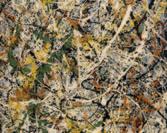
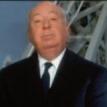
Why a Painting Is Like a Pizza
A Guide To Understanding Modern Art 1:30–2:30 p.m.
Presenter: Nancy G. Heller
Members $20; Nonmembers $30; CODE 1M2-413

Architecture on the Nation’s Front Lawn Walking Tour | 10 a.m.–12:30 p.m.
Leader: Bill Keene
Members $55; Nonmembers $70 CODE 1CW-B01
How To Live To Be 100
3–4 p.m.
Presenter: John Whyte
Members $20; Nonmembers $30; CODE 1K0-623
The Lincoln They Didn’t Teach You About in School 4:30–5:30 p.m.
Presenter: Robert Watson
Members $20; Nonmembers $30; CODE 1K0-624
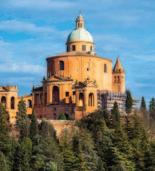
Visit SmithsonianAssociates.org/celebration for information on special pricing packages and extended Encores viewing.

Discovering Emilia-Romagna
Sights, Food, and Wine
7–8:30 p.m.
Presenter: Francine Segan
In Person: Ripley Center (includes reception); Members $45; Nonmembers $55; CODE 1D0-117
Online: Members $20; Nonmembers $30; CODE 1D0-117 (only includes lecture from 7–8 p.m.)
Celebration Weekend Schedule continued on next page
Friday, October 17–Sunday, October 19 | SmithsonianAssociates.org/celebration
All programs are scheduled in Eastern Standard Time
Saturday, October 18 (cont.)
Arts Classes
Mosaic Jewelry
10:15 a.m.–4:30 p.m.
Instructor: Bonnie Fitzgerald
In Person: Ripley Center; CODE 1E0-ACV; Members $95; Nonmembers $110
On Location Photography at the Smithsonian on the National Mall 10:30 a.m.–12:30 p.m.
Instructor: Andargé Asfaw
In Person: Ripley Center; CODE 1E0-AAK; Members $45; Nonmembers $60
Digital Drawing: Remixing the Collection
1–4 p.m.
Instructor: Mike O’Brien
In Person: Ripley Center; CODE 1E0-0ZJ; Members $45; Nonmembers $60
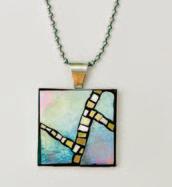






Luminous Landscapes in Watercolor 10 a.m.–1 p.m.
Instructor: Lubna Zahid Online: CODE 1E0-ACZ; Members $60; Nonmembers $75
Watercolor Workshop: Quick-Sketching 1–4 p.m.
Instructor: Cindy Briggs Online: CODE 1E0-0ZH; Members $60; Nonmembers $75
Beautiful Florals in Watercolor 2–5 p.m.
Instructor: Lubna Zahid Online: CODE 1E0-ADA; Members $60; Nonmembers $75
Sunday, October 19
Architecture on the Nation’s Front Lawn Walking Tour | 10 a.m.–12:30 p.m.
Leader: Bill Keene
CODE 1CW-C01, Members $55; Nonmembers $70

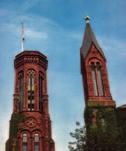
Visit SmithsonianAssociates.org/celebration for information on special pricing packages and extended Encores viewing.
In the 1970s, the ultimate trip for any backpacker was the storied “Hippie Trail” from Istanbul to Kathmandu. A 23-year-old Rick Steves made the trek and, like a travel writer in training, documented everything along the way, from jumping off a moving train to making friends in Tehran to getting lost in Lahore. The experience ignited his love of travel and forever broadened his perspective on the world. Forty-seven years-later, Steves shares stories and the unforgettable moments of his life-changing 1978 experience. His new book, On the Hippie Trail: Istanbul to Kathmandu and the Making of a Travel Writer, is available for purchase.

Online: Sun., Oct. 19, 6:30 p.m.; CODE 1T0-033; Members $30; Nonmembers $45
Unless noted, all programs are presented on Zoom; listed times are Eastern Time. Online registration is required.
The Rise of Strategic Bombing in WWII
World War II stands as the most destructive event in human history. Among its devastating innovations was the widespread use of strategic bombing—the deployment of aircraft to strike civilian targets. At the war’s beginning, all sides rejected using air power to target civilians directly. By its conclusion, however, every belligerent had incorporated some form of strategic bombing as a key element of their military strategy.
Historian Christopher Hamner examines the technology, strategy, philosophy, and moral implications of strategic air power. Drawing on primary sources and firsthand observations from the war years, he covers pivotal events, including the German bombing of Guernica; the London Blitz; the Allies’ Combined Bomber Offensive in Europe; the Allied raid on Dresden; the firebombing of Japan; and the atomic bombings of Hiroshima and Nagasaki.
Thurs., Aug. 7, 6:45 p.m.; CODE 1D0-106; Members $20; Nonmembers $25


The Maginot Line—an array of defenses that France built along its border with Germany in the 1930s to prevent an invasion—was a marvel of engineering. Eight decades on, it is remembered as an expensively misguided response to obvious danger. Historian Kevin Passmore of Cardiff University reevaluates the massive undertaking by tracing the controversies surrounding its construction, the lives of the soldiers who manned the forts, the impact on German-speaking inhabitants of the frontier, and the fight against espionage from within. Far from a backward step, Passmore argues, the Maginot Line was an ambitious project of modernization— one that was let down by strategic error and grow ing dissatisfaction with fortification. His new book, The Maginot Line: A New History (Yale University Press), is available for purchase.
Tues., Sept. 9, 6:45 p.m.; CODE 1K0-604; Members $20; Nonmembers $25
In the spring of 1943, on the eve of the Allied invasion of Sicily, British intelligence staged one of the most audacious deceptions of World War II. Hoping to convince Adolf Hitler and German military leadership that the target was the Balkans, the British created a fictitious character who would carry false invasion plans intended to fall into German hands.
The invention was “William Martin”—an officer in the Royal Marines—and a corpse carrying official papers, pictures of a “sweetheart,” and documents for a Balkan invasion was dumped off the coast of Spain. A fisherman recovered the body and turned it over to German intelligence. Hitler, believing that the Allies were planning to strike in Greece, moved reinforcements to the Balkans instead of Sicily. Historian Christopher Hamner examines this elaborate ruse by using original documents from 1943.
Wed., Sept. 10, 7 p.m.; CODE 1NV-146; Members $25; Nonmembers $30

ID card created by British intelligence for "Major Martin"
What time does the program end? Unless noted, Smithsonian Associates programs run 1 hour 15 min.–2 hours, including Q&A
The Mystifying Madness of Commodus
Lucius Aurelius Commodus, son of Marcus Aurelius, ruled Rome from the year 180. Reared in the house of one of the most philosophical, moderate, and admired Roman emperors, Commodus inexplicably and suddenly descended into bizarre megalomania around 190. As one of his many antics, the emperor traded philosopher’s curls for a gladiator’s crop, staging gruesome spectacles—slaying bears, exotic animals, and even Rome’s disabled citizens. Even stranger, Commodus proclaimed himself a reincarnated Hercules, a demi-god with the right to reshape Roman traditions and institutions that had endured for centuries.

Historian Colin Elliott investigates why Commodus abandoned the moderate and judicious style of rule of his predecessors and embraced brutality in the arena, exploring how trauma, crisis, sycophancy, and absolute power forged—and felled— Rome’s gladiator emperor.
Mon., Aug. 4, 6:45 p.m.; CODE 1K0-602; Members $25; Nonmembers $30 Commodus as Hercules, the Capitoline Museums

In 1875, when Britain acquired a majority share of the Suez Canal, it already possessed a worldwide empire. Conquests between then and World War I made the empire even bigger, backed by a strong industrial economy and a faith that imperialism was good and right. For many Britons, such as Winston Churchill, possession of the empire was a source of national pride, though there were already a few, especially in the labor movement, who rejected the idea of dominating other peoples.
Historian Patrick Allitt traces how the British Empire reached its zenith during and just after World War I and subsequently entered its decline. He considers influences including critics such as Gandhi; the beginning of the empire’s breakup after World War II under the Labour government of Clement Attlee; and the humiliation of British forces during the Suez Crisis of 1956.
Wed., Aug. 6, 6:30 p.m.; CODE 1H0-874; Members $20; Nonmembers $25
Winston Churchill, renowned for his leadership during World War II, harbored a deep and enduring passion for painting, which provided him with a vital escape from stresses and frustrations for almost half a century. He began painting in 1915, at the age of 40, and over the course of his life painted more than 500 canvases, comprising landscapes, seascapes, still lifes, and portraits. The largest collection of his works is displayed at his former home at Chartwell in Kent.
Katherine Carter, curator of Chartwell’s collections for more than a decade, argues that in the absence of having kept a written diary, Churchill’s artworks are a visual one. He acknowledged the vital role painting played for him, and Carter’s illustrated presentation spotlights this important yet often-overlooked aspect of the statesman’s life and legacy.
Wed., Aug. 13, 2 p.m.; CODE 1K0-599; Members $25; Nonmembers $30

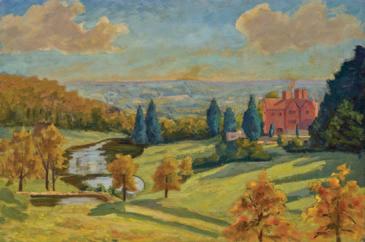
LIFELONG LEARNING
Angelica Schuyler Church, Alexander Hamilton’s sister-in-law, witnessed American history at its birth. A woman of great influence in a time of influential women, she was the heart of Thomas Jefferson’s “charming coterie” of artists and salonnières in Paris. Her transatlantic network of important friends spanned the political spectrum, and her brilliant letters kept them well informed. Biographer Molly Beer explores Angelica Schuyler Church’s life and legacy, revealing how American women wielded their power to shape history and shedding new light on the early political and social fabric of the United States.
Wed., Aug 13, 6:45 p.m.; CODE 1D0-108; Members $20; Nonmembers $25

Whether it’s the mighty pyramids of Egypt, the majestic temples of Mexico, or the magnificent Colosseum of Rome, we have an idea of what the past looked like. But how can we understand the past with our other senses? From the tang of Roman fish sauce and the springy crust of Egyptian sourdough to the boom of medieval cannons and the clash of Viking swords, history often neglects vivid elements like these that were an intimate part of our ancestors’ lives.
Author Sam Kean reveals how a new generation of researchers is resurrecting these hidden details and pioneering a new discipline called experimental archaeology. His book Dinner with King Tut: How Rogue Archaeologists Are Recreating the Sights, Sounds, Smells, and Tastes of Lost Civilizations (Little, Brown) is available for purchase.
Thurs., Aug. 14, 6:30 p.m.; CODE 1M2-400; Members $25; Nonmembers $30
Even before the United States gained independence, colonial leaders hoped Canadians would join in resisting what they considered British abuses. In 1774, the First Continental Congress sent “A Letter to the Inhabitants of the Province of Quebec,” urging unity with the colonies. Invitations to send delegates to the Continental Congress followed in 1775 and 1776. At the same time, American forces launched three invasions into Canada, attempting to draw it into the conflict.

These repeated diplomatic and military efforts aimed at winning over the French-speaking population to the American revolutionary cause ultimately failed. Historian Ralph Nurnberger explores the reasons why Canadians in the late 18th and early-19th centuries remained fervently nationalistic and how their connection to Britain helped define the country’s distinctive path in North American history.
Thurs., Aug. 21, 6:45 p.m.; CODE 1D0-109; Members $20; Nonmembers $25

World’s fairs have long served as global showcases for innovation, culture, and progress. These international expositions brought together nations to display advancements in technology, industry, art, and science, often reflecting the aspirations and challenges of their times. Notable inventions—such as the telephone, the Ferris wheel, and television—were introduced to the world, while cross-cultural exchange and collaboration flourished.
Beyond technological marvels, these fairs embodied a sense of optimism, inspiring societies to imagine what could be achieved through human ingenuity and cooperation. They fostered national pride, promoted modernization, and expressed a collective yearning for peace and unity.
Art historian Jennie Hirsh delves into two pivotal world’s fairs, examining how these landmark events showcased their eras’ most groundbreaking achievements in technology, culture, art, and architecture.
AUG 18 Chicago, 1893: World’s Columbian Exposition SEPT 29 Paris, 1900: The Exposition Universelle
Individual sessions: Mon., Aug. 18 (CODE 1D0-104B); Mon., Sept. 29 (CODE 1D0-104C); 6:45 p.m.; Members $25; Nonmembers $30
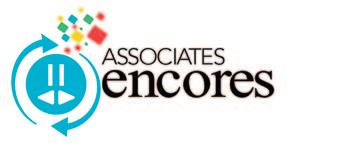
Your programs...your time
Registered for a Smithsonian Associates online program but missed it because of a schedule conflict? Wish you could take a second look at a presentation you loved? Associates Encores offers the answer to these questions—and more.
Visit SmithsonianAssociates.org for more information
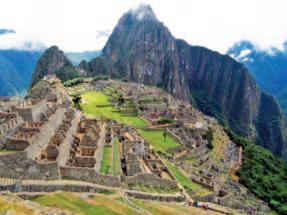
During an extraordinary 4,000-year history, the pre-Columbian civilizations of the Andean world created the earliest cities of the Western hemisphere, stupendous monumental architecture, magnificently crafted artifacts—and, on the eve of the arrival of Europeans, one of the most extensive empires the world has ever known, the Inca.
In a full-day seminar, George L. Scheper, a senior lecturer in advanced academic programs at Johns Hopkins University, provides a cultural overview of these achievements.
Sat., Aug. 23, 10 a.m.–4 p.m.; detailed program information on website; CODE 1M2-402; Members $100; Nonmembers $120
World Art History Certificate elective: Earn ½ credit Nazi Art Plunder in Postwar
Art looting was a central feature of Nazi expropriation throughout Europe during World War II. After the war, hundreds of thousands of artworks were recovered. But not all looted art was returned to its rightful owners.
Following cultural property norms of the time, several European governments created custodianships over unclaimed pieces, without using their archives to help determine ownership. This policy has extended the dispossession of Jewish owners well into the 21st century.

Historian Elizabeth Campbell provides an overview of Nazi art looting in Europe and the continuing recovery and restitution process. Her latest book, Museum Worthy: Nazi Art Plunder in Postwar Western Europe, is available for sale.
Tues., Aug. 26, 6:30 p.m.; CODE 1T0-027; Members $20; Nonmembers $25
Following the fall of France in 1940 during World War II, the United States rapidly ramped up production for the war effort, prompting massive conversions of existing factories and the construction of enormous new plants. With 20% of the U.S. population moving due to job demands and private home construction stifled by the war, a housing crisis of unprecedented scale emerged.
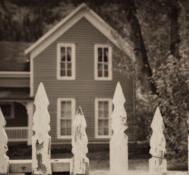
In response, the government launched programs to build housing swiftly, creating approximately 2 million housing units by the end of the war in 1945. Bill Keene, lecturer in urban studies and architecture, explores the development of the crisis, examining the wide range of housing solutions and assessing both the challenges these initiatives faced and their successes.
Thurs., Sept. 4, 7 p.m.; CODE 1CV-067; Members $25; Nonmembers $30
Discover the fascinating world of ancient Egypt in programs that explore the daily life, culture, and innovations of one of the world’s most influential civilizations. Scholar Shelby Justl of the Penn Museum in Philadelphia draws on the discoveries of ongoing archaeological explorations and experimental archaeology to bring to life the rich history of Egypt and its expanding role on the global stage.
SEPT 4 Eating and Drinking Like an Egyptian
SEPT 11 Ancient Egyptian Adornments
SEPT 18 The Fairer Sex: Women in Ancient Egypt

SEPT 25 Ships, Travel, and Trade on the “Great Green” Mediterranean 4-session series: Thurs., Sept. 4–25, 12 p.m.; detailed program information on website; CODE 1NV-EGY; Members $80; Nonmembers $100
Individual sessions: Thurs., Sept. 4 (CODE 1NV-141); Thurs., Sept. 11 (CODE 1NV-142); Thurs., Sept. 18 (CODE 1NV-143); Thurs., Sept. 25 (CODE 1NV-144); 12 p.m.; Members $25; Nonmembers $30
Life at the Edge of the Roman Empire
Running 73 miles from Britain’s Wallsend on the North Sea to Bowness-on-Solway on the Solway Firth, Hadrian’s Wall was a significant frontier of the Roman Empire. Constructed by Emperor Hadrian, who ruled between 117 and 138, the boundary marking the northern border of the province of Britannia consisted of curtain walls, forts, and watchtowers along with deep trenches.
While an impressive example of military fortification, the archaeological remains of this barrier offer insight into wider topics of Roman culture. Well-preserved examples of objects from daily life—birthday invitations, militar y equipment, and religious artifacts—paint a vivid picture of life at the edge of the Roman imperium. Art historian Christopher Gregg explores the history of Hadrian’s Wall and its associated ruins and shares anecdotes from his 2019 walk along the wall’s full length.
Thurs., Sept. 11, 6:30 p.m.; CODE 1H0-875; Members $20; Nonmembers $25

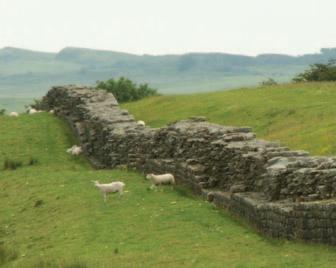
Istanbul is a city of wonders whose architectural treasures are enduring legacies of Roman, Byzantine, and Ottoman rule. Once a major stop along the Silk Road, Istanbul’s historic center is now a UNESCO World Heritage Site. There are reminders around every corner of the city’s place in world history, from Hagia Sophia to Topkapi Palace to the Chora Church to the underground ruins of the Byzantine Great Palace.
Tour guide Serif Yenen delves into storied sites to visit, along with ones still waiting to be discovered by visitors.
Fri., Sept. 12, 12 p.m.; CODE 1J0-484; Members $20; Nonmembers $25
From Fur Trading to a Political and Economic Powerhouse
Founded in 1670, Canada’s Hudson’s Bay Company was once the most important political and economic force in northern and western North America. Now, after a storied run of 355 years, Hudson’s Bay is shutting its doors.
Stephen R. Bown, author of The Company: The Rise and Fall of the Hudson’s Bay Empire, examines how a smattering of foreign agents transformed into a culturally blended and self-sustaining domestic entity with territory once including much of the Pacific Northwest. He explores how tapping into pre-existing Indigenous commercial networks enabled its expansion. Along the way, the culture and economy of Indigenous peoples from Montreal to Oregon to Vancouver Island were reshaped—and the entire northern North American world was transformed. Tues., Sept. 16, 6:30 p.m.; CODE 1H0-876; Members $20; Nonmembers $25

What time does the program end? Unless noted, Smithsonian Associates programs run 1 hour 15 min.–2 hours, including Q&A
William Franklin, son of Benjamin Franklin yet loyal servant of the British king during the American Revolution, lived a tumultuous life. His journey from familial devotion to political defiance offers a compelling study in divided loyalties as the colonies clamored for independence. Historian Richard Bell explores the stark contrast between Benjamin’s ideals of liberty and William’s unwavering belief in the stability of monarchy, creating a portrait of personal and political estrangement that underscores the sacrifices within families that often accompany great historical upheavals.
Wed., Sept. 24, 6:30 p.m.; CODE 1M2-405; Members $25; Nonmembers $30


Louis XIV remains one of the most influential and fascinating figures in European history. His reign, spanning over 70 years from 1643 to 1715, defined an era of absolute monarchy, cultural splendor, and military ambition.
Historian Alexander Mikaberidze explores the life and legacy of Louis XIV, from his early years as a boy king under the guidance of Cardinal Mazarin to his transformation into the embodiment of royal authority—famously declaring “L’État, c’est moi” (“I am the state”) and crafting an image of unrivaled grandeur.
Louis XIV’s model of power endured beyond his lifetime. His vision of centralized authority shaped modern governance and his courtly rituals influenced monarchies across Europe. Mikaberidze surveys his successes and failures and considers how his legacy continued to affect France and the world.
Thurs., Sept. 25, 6:30 p.m.; CODE 1M2-406; Members $25; Nonmembers $30
In 1768, the British slave ship Black Prince departed England, bound for West Africa. But before reaching the African coast, the crew mutinied, murdering the captain and his officers. The mutineers renamed the ship Liberty and set out for Brazil. The ship eventually wrecked off the coast of Hispaniola, and the crew fled.
History professor James H. Sweet unravels the dramatic story of the events onboard the vessel and the owners’ efforts to capture the rebels. The owners mobilized the power of the British government to seek justice and restitution, Sweet says, foreshadowing forms of corporate-state capture that persist to this day.
His new book, Mutiny on the Black Prince: Slavery, Piracy, and the Limits of Liberty in the Revolutionary Atlantic World (Oxford University Press), is available for purchase.
Thurs., Sept. 25, 6:30 p.m.; CODE 1T0-030; Members $20; Nonmembers $25
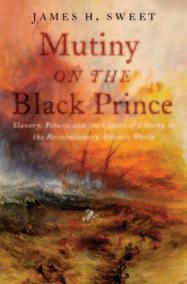

One of the most momentous eras in human history was the 200 years of ancient Israel’s battles against Rome that reshaped Judaism and gave rise to Christianity. Historian Barry Strauss examines the courageous yet tragic uprisings, the geopolitical clash between the empires of Rome and Persia, internal conflicts among Jews, and the ethnic conflict between Jews and Gentiles in Judea.
He focuses on the Great Revolt of 66–70, which led to the destruction of Jerusalem and the Temple, culminating in the Siege of Masada, where defenders chose mass suicide over surrender; the Diaspora Revolt, ignited by humiliating taxes on Jews; and the Bar Kokhba Revolt, which flared up in response to the Roman decision to rebuild Jerusalem as a pagan city.
Strauss is the author of Jews vs. Rome (Simon & Schuster), which is available for purchase.
Thurs., Sept. 25, 6:30 p.m.; CODE 1H0-877; Members $20; Nonmembers $25
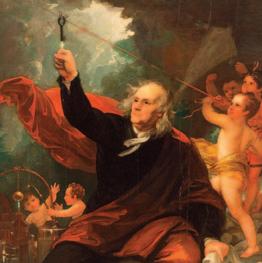
With his wild hair, tiny spectacles, and larger-than-life persona, Benjamin Franklin was the genius of his age—more famous than the moon, or so he liked to claim. But what can this master inventor, statesman, and self-made celebrity teach us about genius today?
Caroline Winterer, a professor of history at Stanford University, leads a survey of Franklin’s most remarkable creations and groundbreaking ideas—from harnessing electricity and inventing bifocals to revolutionizing the postal system and crafting a musical instrument that inspired Mozart and Beethoven. And, of course, his greatest invention: himself. Discover how Franklin was very much a man of his own century, as well as how he continues to offer timeless lessons that help us explore our own possibilities for genius today.
Mon., Oct. 6, 6:45 p.m.; CODE 1D0-114; Members $20; Nonmembers $25
True Stories from the National Security Beat

Scott Shane covered national security for The New York Times for 15 years and twice shared Pulitzer Prizes with his colleagues. He tells stories of his career, including what happened when he told the Obama White House the Times had a quarter-million secret diplomatic cables; how he spent a summer in an oversized high-security closet at the Times, poring over 60,000 National Security Agency documents from Edward Snowden; and how he showed that Russian intelligence had created fake Americans and sprinkled them on Facebook to spout the Russian line. Along the way, he considers a paradox of American government: how secret agencies can operate in a democracy.
Tues., Oct. 7, 6:30 p.m.; CODE 1T0-031; Members $20; Nonmembers $30
In 1085, determined to understand just what he controlled after he became king of England, William the Conqueror ordered an inquest be made in every shire into the landed and fiscal resources of the realm so that he could know what he owned and what taxes were due him. The Domesday Book hasn’t been used as evidence in disputes since the 1960s, but local historians and genealogists continue to look to it for information about the early history of English villages and family lines.

Samuel Collins, professor of history at George Mason University, explores how and why this extraordinary document came to be and what it reveals about the governance and economy of late 11th-century England and the impact of the Norman Conquest.
Tues., Oct. 14, 6:30 p.m.; CODE 1H0-880; Members $20; Nonmembers $30
The monarchy is the oldest form of government in the United Kingdom, stretching back to AngloSaxon England and Scotland, where smaller kingdoms were consolidated by the 10th century. Tudor and royal historian Carol Ann Lloyd-Stanger traces the complicated history of the role of kings and queens through the centuries. Explore the way centralized rule of England was established in the 11th century, and then challenged ever since.
Learn how the creation of Magna Carta, through all its iterations, marked a legal way of controlling the power of the monarch. Trace the growth of parliamentary power and examine how the monarchy’s role evolved from absolute ruler to “Head of Nation”—a symbol of unity, stability, and national pride.
5-session series: Wed., Oct. 15–Nov. 12, 6:30 p.m.; detailed program information on website; CODE 1M2-411; Members $110; Nonmembers $135

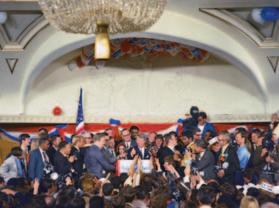
The year 1968 encapsulates the narrative of the Sixties in America. Leonard Steinhorn, a professor of communication and affiliate professor of history at American University, offers a perspective on a year that transformed the nation.
Steinhorn views the America of 1968—marked by the Vietnam war, the assassinations of leaders, student unrest, and cultural and racial hostilities—as one that would have been unrecognizable just a few years prior.
To understand the Sixties and how the decade reshaped the nation, he says, it’s necessary to consider how the seminal year of 1968 influenced American history.
Mon., Oct. 20, 6:30 p.m.; CODE 1H0-882; Members $20; Nonmembers $30
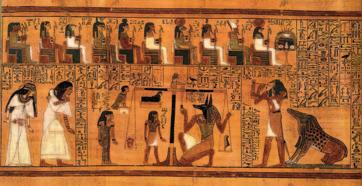
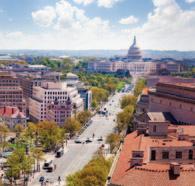
America’s most famous avenue connects the White House and the United States Capitol, but it hasn’t always been a grand thoroughfare. Pennsylvania Avenue and the surrounding neighborhood has been renovated, re-imagined and revitalized repeatedly. From Murder Bay, a center of crime, gambling, and prostitution in the mid-19th century to the stately boulevard of presidential inaugurations, Carolyn Muraskin, founder of DC Design Tours, unfolds a story of metamorphosis along what came to be known as America’s Main Street.
Sites highlighted include the White House; Eisenhower Executive Office Building; Blair House; Federal Triangle; the Willard Hotel; Old Post Office Tower; J. Edgar Hoover FBI Building; U.S. Navy Memorial; National Archives; and Temperance Fountain.
Wed., Oct. 22, 7 p.m.; CODE 1NV-151; Members $25; Nonmembers $35
In many instances, the source of contemporary knowledge about the ancient world is texts dating back two or three millennia, such as the works of Homer and the Bible. These and other texts in Hebrew and in Greek were copied and recopied by generations of scribes across the centuries. Hundreds of ancient and medieval manuscripts are preserved in museums and libraries, offering a window into this painstaking work and the civilizations it documented.
In other cases, knowledge of the ancient world derives from the archaeological discoveries of the 19th century in Egypt and in Mesopotamia, along with the attendant decryption of the hieroglyphic and cuneiform written languages. Biblical scholar Gary Rendsburg explores the stories behind these sources, which retain their narrative power into the 21st century.
Sat., Oct. 25, 10 a.m.–4 p.m.; detailed program information on website; CODE 1M2-417; Members $100; Nonmembers $125
Russia’s transition from the collapse of Communism to the emergence of Vladimir Putin as its dominant leader is a complex story of political upheaval, economic chaos, and shifting social landscapes. Drawing on his experiences during the five years he spent as a journalist reporting for The Moscow Times and Reuters, Adam Tanner provides a window into the 1990s.
Through storytelling and his own photographs captured across Russia during that transformative period, he traces how the country’s early years under its first democratically elected leader, Boris Yeltsin, set the stage for Putin’s rise. Tanner’s insights offer a deeper understanding of the historical, political, and cultural forces that formed modern Russia against the backdrop of the current global geopolitical landscape.
Mon., Oct. 27, 12 p.m.; CODE 1NV-152; Members $25; Nonmembers $35

Unless noted, all programs are presented on Zoom; listed times are Eastern Time. Online registration is required.

When Georges Bizet died suddenly at the age of 36 in 1875, his new opera, Carmen, had just been dubbed a humiliating failure, panned by critics at its Paris premiere barely three months beforehand. Bizet would never know that only a few months later its performances in Vienna, St. Petersburg, London, and New York were triumphant, and this vibrant and revolutionary work has never been absent from the world’s opera stages since then.
In this 150th anniversary year of Bizet’s death and Carmen’s birth, speaker and concert pianist Rachel Franklin explores how, despite enjoying only modest success during his lifetime, Bizet’s innovative, emotionally compelling style has influenced countless composers and profoundly shaped opera history to this day.
Tues., Aug. 5, 6:45 p.m.; CODE 1K0-601; Members $25; Nonmembers $30
Buried Treasures and Stories of the Past
For nearly 400 years, a treasure lay buried under the streets of London. Unearthed by accident, this dazzling collection of nearly 500 jewels and gemstones, necklaces, pins, rings, and other precious objects was most likely the stock of a goldsmith jeweler in Cheapside. Probably buried in the mid-17th century, the stash—now known as the Cheapside Hoard—is the largest surviving collection from the era.
Tudor scholar and historian Carol Ann Lloyd-Stanger examines the story of these luxury items and what they reveal about life in Renaissance England. She links specific pieces of jewelry to similar items in portraits and considers how the jewels, scent bottles, and salt cellars reveal how royals and nobility of the period used such items to communicate power.
Wed., Aug. 6, 6:30 p.m.; CODE 1M2-398; Members $25; Nonmembers $30

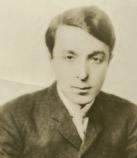
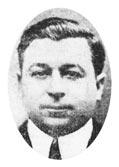

In the early 20th century, Manhattan’s Times Square was a gritty neighborhood full of horse stables. Today, it’s the vibrant center of Broadway’s Theater District. The dramatic transformation has its roots in a battle between a group of entertainment moguls and three scrappy Lithuanian-born brothers: Lee, J.J., and Sam Shubert. Their vision revolutionized Broadway as they built a theatrical empire that evolved into today’s Shubert Organization.
Actor Tim Dolan, founder of Broadway Up Close tours, delves into the remarkable ascent of the Shubert brothers—Broadway’s most powerful theatrical dynasty—revealing the obstacles they conquered and the longtime collaboration with the architect who shaped many of their theaters. With a trove of rare photographs and archival videos, Dolan brings to life the heart of the Shubert empire: the Theater District between 44th and 46th Streets. Along the way, he shares captivating behind-the-scenes stories about classic musicals that made Broadway history there.
Mon., Aug. 11, 7 p.m.; CODE 1NV-137; Members $25; Nonmembers $30
Read more about programs in this guide on our website. Search by code or date. Expanded program descriptions, presenters’ information, and more at SmithsonianAssociates.org.
From its start as a DVD-by-mail rental service, Netflix has systematically changed the rules of the entertainment media business. Its introduction of streaming in 2007 led to the decline of video rental stores such as Blockbuster and dramatically increased the use of broadband internet.

Starting in 2013, Netflix’s innovation of offering its own programming, from “House of Cards” to “The Crown,” challenged the traditional ways viewers watched TV. Now its original movies, like Emilia Perez and All Quiet on the Western Front, are upending the operations of the Hollywood studios. Media historian Brian Rose explores how Netflix is primed to become the dominant source of online entertainment throughout the world.
Tues., Aug. 12, 6:30 p.m.; CODE 1J0-475; Members $20; Nonmembers $25
The Off-Key History of Jazz Movies
Writer Virginia Woolf dismissed clothes as “vain trifles” but acknowledged that “they wear us and not we them.” The way we dress reflects our times, our sense of self, and our aspirations, says author Debra N. Mancoff. Mancoff reveals how clothing tells stories over time and across cultures. Just as vocabulary and syntax give language structure and fluency, the elements of dress, construction, and style make a statement. Items of apparel offer insight into an age, an era, and an individual’s place in society but only within the context of how they are worn. And that context is fashion. Mancoff’s latest book, Looking at Fashion (Getty Publications), is available for purchase.

Wed., Aug. 13, 6:45 p.m.; CODE 1CV-068; Members $20; Nonmembers $25
Jazz has consistently defied efforts to capture its essence, milieu, dynamics, and quicksilver magic effectively in the mainstream medium of movies. Although cinema and jazz were born at roughly the same time, they have often appeared to be two art forms at odds with one another.
Tim A. Ryan, a professor of English at Northern Illinois University, surveys the history of jazz on film and assesses the challenges of dramatizing the world of jazz in film, from short “soundies” to feature-length narratives, the classic golden age of the major studios to the fragmented ecology of the 21st century, and from popular American cinema to European art films.
Wed., Aug. 13, 6:30 p.m.; CODE 1H0-873; Members $20; Nonmembers $25

Today, the popular 1989 Disney film ensures that most people think of “The Little Mermaid” as a tale of triumph. But in Hans Christian Andersen’s “The Little Mermaid” fairy tale, which loosely inspired the movie, the mermaid fails to meet the terms of the sea witch’s bargain and dies. Though this is a far cry from the happy ending most expect, it is in line with traditional tales of mermaids. The heart of the mermaid’s story is always longing to be part of a world that seems forever closed to her.
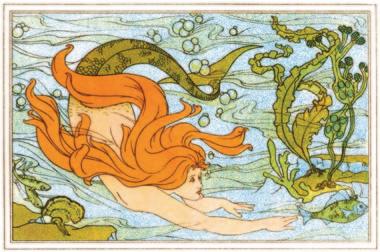
Folklorists Sara Cleto and Brittany Warman do a deep dive into “The Little Mermaid” fairy tale to discuss folkloric and literary tales that inspired it. They also explore how the story has been retold in contemporary times. The lecture includes prompts for audience interaction.
Wed., Aug. 20, 6:45 p.m.; CODE 1J0-481; Members $20; Nonmembers $25
There are 1,248 UNESCO World Heritage Sites, each one offering a glimpse into the evolution of complex civilizations, empires, and religions. In this monthly series, historian Justin M. Jacobs gives an in-depth overview of both well-known and lesser-known locations.
Programs on this page are part of Smithsonian Associates’ 60th Anniversary offerings
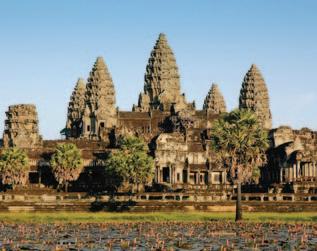
The magnificent temple complex of Angkor Wat in Cambodia marks the rise of the Khmer Empire in Southeast Asia and its incorporation of Indic cultural influences into the architecture of one of the largest religious monuments in the world. Jacobs explores how Angkor Wat later became a center of Buddhist worship, a symbol of French imperial pretensions, and finally an icon of the modern Cambodian nation.
Wed., Aug. 27, 6:45 p.m.; CODE 1J0-477; Members $20; Nonmembers $25
Few ruins of the ancient world are more instantly recognizable than the majestic white columns of the Parthenon on the Acropolis in Athens. Jacobs provides a comprehensive historical overview of the many incarnations of the monuments on the Acropolis, including some that no longer exist. After revisiting the original function and appearance of the classical Acropolis, he explores how its monuments were altered over time to serve new rulers and new cultural contexts until reaching their current whitewashed form in the 20th century.
Wed., Sept. 10, 6:45 p.m.; CODE 1J0-483; Members $20; Nonmembers $25


The grief of a Muslim shah for his dead wife inspired the 17th-century construction of what would become the architectural jewel of the Mughal empire in India. The Taj Mahal, built as a tomb for the Persian wife of a male descendant of Genghis Khan, showcases the splendid craftsmanship of South Asian artisans, the motifs of Persian-inspired Muslim art and architecture, and the political influence of Central Asian conquerors in India. Jacobs simulates the experience of a visit to the Taj Mahal complex, highlighting historical themes and revealing architectural details along the way.
Wed., Oct. 8, 6:45 p.m.; CODE 1J0-492; Members $20; Nonmembers $25
In the 6th and 5th centuries B.C.E., the ancient Persians forged a new empire that stretched from the Indus River in the East to the Danube in the West. Jacobs analyzes the architectural symbol of their unprecedented wealth and power: the palace complex at Persepolis. By examining the artistic motifs of surviving stone reliefs and the many mysteries of the ruins, he illustrates how the Persians laid the rhetorical foundations of so many other empires that followed in their historical wake.
Mon., Nov. 3, 6:45 p.m.; CODE 1J0-500; Members $20; Nonmembers $30


Spend two fascinating evenings expanding your knowledge of wine as you travel the world with sommelier Erik Segelbaum in a series of delectable wine-tasting adventures. Each immersive program includes a curated personal tasting kit to enhance the experience.

Sicily’s reputation as a food and wine paradise has remained intact for more than 3,000 years. Beginning with the Greeks in the 8th century B.C.E. and continuing with the Phoenicians and Romans, the best vines were propagated, viticulture developed, and Sicilian wines were promoted on and off the island. Today, we see—and taste—the fruits of these labors. Whether robust flavors from the slopes of still-active Mount Etna or the fresh, bright wine from coastal and inland vineyards, Sicily has something for everyone.
SEPT 12 The Ancient World: Israeli Wines Explored Israel has over 11,000 years of viticultural history. It is the only place in the world where wines are still being produced from the same biblical-era grapes used to make those that Moses and Jesus drank. This delicious tasting explores the full range of Israeli wines, including rare indigenous varieties from the biblical era. It’s perfect for any lover of wine and history.

Individual sessions: Fri., Aug. 15 (CODE 1L0-647); Fri., Sept. 12 (CODE 1L0-648); 6 p.m.; Members $70; Nonmembers $80
Wine-tasting kit information: The cost includes a curated personal tasting kit with enough wine for one person to sample the full lineup of wines. Additional participants must register individually to receive their own tasting kit, which is an essential component of the workshop. Kits are available during two scheduled pick-up times the day before the program and the day of the program, 11 a.m.–5 p.m., at Shilling Canning Company (360 Water St. SE, Washington, DC; Metro: Navy Yard-Ballpark station, Green line).
NOTE: Patrons will receive additional wine tasting kit pick-up information by email prior to the program. Due to state and federal laws, Smithsonian Associates cannot ship wine kits. However, SOMLYAY may be able to provide kits to participants outside the Washington, D.C., area (who must cover shipping costs). Please contact erik@thesomlyay.com for more information
Walt Disney is remembered both for creating enduring characters and films and building a cultural empire rooted in imagination, optimism, and storytelling. Guided by this outlook, he and his Imagineers conceived something special: an architecture of reassurance in Disney theme parks. Walt aimed to welcome guests into places that respect the individual, allowing the entertainment entrepreneur to share timeless stories.
Former urban planner Sam Gennawey, author of Walt Disney and the Promise of Progress City, decodes Disney’s design DNA and reveals the techniques his team employed at Disneyland—which are more than just showbiz magic. From the moment you walk through the turnstiles, Walt and company have relied on eight design principles to take you on a journey through spaces that continue to delight.
Wed., Aug. 20, 7 p.m.; CODE 1NV-139; Members $25; Nonmembers $30

LIFELONG LEARNING In Person
Under the artistic direction of maestro Charlie Young, the Smithsonian Jazz Masterworks Orchestra (SJMO) has celebrated some of the greatest jazz music throughout its 35-year history as one of the crown jewels of the National Museum of American History.
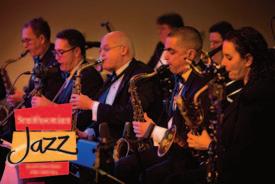
Led by A. Philip Randolph, the Brotherhood of Sleeping Car Porters was organized in 1925 to fight the substandard treatment and working conditions of African Americans in Pullman car service. To celebrate the centennial of this historic railroad labor union—the first of its kind—SJMO presents music highlighting railroads across America. Selections include “Last Train from Overbrook” by James Moody; “Blues in the Night” by Harold Arlen; and “9:20 Special” by Earle Warren, Bill Engvick, and Jack Palmer. Sat., Aug. 23, 7 p.m.; Warner Bros. Theater in the National Museum of American History; CODE 1P0-872; Members $30; Nonmembers $40
2025–2026 CONCERT DATES: Sat., Nov. 8; Sat., Dec. 13; Fri., Sat., Feb. 28; Fri., Apr. 17; Sat., June 6. Registration information to be announced.
When the 369th infantry regiment eventually known as the “Harlem Hellfighters” arrived in France in December 1917, none of them could have imagined that they would initiate a trend of African Americans moving to Paris, a migration that continues to this day, says Michele L. Simms-Burton, a former professor of African American studies.
The unit’s band helped Parisians chase away their wartime blues by introducing them to jazz. Simms-Burton explores how jazz took Paris by storm, the circumstances that made the city ripe for embracing this new musical form, and why Paris continues to be a place where African American musicians work, create, and live.
Wed., Sept. 3, 6:30 p.m.; CODE 1J0-482; Members $20; Nonmembers $25


Looking for a choral program that celebrates memorable music across the decades? This is the one for you. Choral conductor and music educator Ernest Johnson leads the ensemble in arrangements of the hits you know and love. Songs may include favorites from the stage and screen, classic standards from the American Songbook, and legendary hits by pop artists. Some selections will be from the 1960s, in celebration of the 60th anniversary of Smithsonian Associates. (The final song list and musical arrangements are chosen to fit the specific vocal and musical abilities of the group.)
No audition is required. Rehearsals culminate in a free performance on Nov. 20 for invited guests.
11 sessions plus performance: Thurs., Sept. 4–Nov. 13, 6:30 p.m.; Thurs., Nov. 20 performance, 7:30 p.m.; Ripley Center; CODE 1P0-882; Members $150; Nonmembers $165
Please visit SmithsonianAssociates.org to view the FAQ on Health & Safety guidelines for in-person programs
Read more about programs in this guide on our website. Search by code or date. Expanded program descriptions, presenters’ information, and more at SmithsonianAssociates.org.
Bob Dylan arrived in New York City one winter morning in 1961. His music and spirit would go on to have a huge impact on popular music for decades. What hardly anyone knew then was that—like so many before him—Dylan was concealing his Jewish origins. He had been born Robert Allen Zimmerman to Jewish parents in Duluth, Minnesota, in 1941.

Dylan’s instincts for escape and reinvention have helped shape his long career, says author Harry Freedman. Freedman traces the folk revival movement spearheaded by Dylan and the heady creativity of the 1960s. Freedman’s book Bob Dylan: Jewish Roots, American Soil (Bloomsbury) is available for purchase.
Thurs., Sept. 4, 12 p.m.; CODE 1T0-028; Members $20; Nonmembers $25
In addition to engaging drama, the popular TV series “Downton Abbey” offered a window into the social, political, and cultural life of a period that spans from the Edwardian era to the 1920s. Historian Julie Taddeo explores the show’s appeal—which goes deeper than its period fashions and lavish sets—to examine its historical accuracy and what it says about the 21st century, from the 2008 economic crash to Brexit to America’s fascination with British royalty.
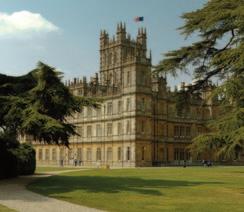
In a discussion timed to coincide with the release of the third “Downton Abbey” movie, she considers the upcoming film as well as the preceding two. Taddeo also addresses Maggie Smith’s death in 2024 and why so many people connected with her as Violet, Dowager Countess of Grantham.
Mon., Sept. 8, 6:45 p.m.; CODE 1K0-607; Members $25; Nonmembers $30
Ever since the death of Charlotte Brontë in 1855, her tragic life story–entwined with those of her novelist sisters Emily and Anne–has been a cultural legend. Much of this legend originates in Elizabeth Gaskell’s controversial 1857 biography, The Life of Charlotte Brontë, which created a furor on publication. As a result, a censored edition was issued that remained the standard until the middle of the 20th century. The question of how much of it is true has persisted.

However, doubts about the biography’s integrity rely on a false confession Gaskell was forced to make to save her publisher from being sued, argues author Graham Watson. Watson discusses why he believes the findings from his research challenge many long-held assumptions about Brontë and her family.
His new book, The Invention of Charlotte Brontë (Pegasus), is available for sale.
Fri., Sept. 5, 12 p.m.; CODE 1CV-069; Members $20; Nonmembers $25
Seamus Heaney (1939–2013) is the most celebrated poet of his generation, a Nobel Prize winner whose facility for language is matched by a readiness to question the place of art in a world of moral and political crisis. Born in Northern Ireland, Heaney left a body of work that transcends the specifics of its time and place yet also confronts the descent of the region into sectarian violence in thoughtprovoking ways.

Though his Irish identity is foundational to this work, Heaney is also a poet of the world, as influenced by Robert Frost as he is by W. B. Yeats. Lucy Collins, an associate professor at University College Dublin, explores Heaney’s evolution as a poet from early encounters with the natural world to later texts of political and philosophical inquiry.
Mon., Sept. 8, 6:30 p.m.; CODE 1H0-878; Members $20; Nonmembers $25
All Smithsonian Associates online programs are closed captioned
A Path to Wisdom, Courage, and Connection

Yoga therapist Linda Lang offers a unique exploration of aging—its challenges, potent discoveries, and unexpected opportunities. Through a blend of lecture, experiential practices, and yogic philosophy, Lang invites participants to examine the physical, emotional, and spiritual dimensions of growing older. Drawing on evidence-based practices and in-depth experience with older students, Lang shares tools to manage anxiety; cultivate emotional resilience; and approach life transitions with clarity, a sense of purpose, and deep appreciation for the process. Key topics include understanding the psychological impact of aging; yoga-based practices to support mental and emotional well-being; finding strength and meaning through shared human experience; and cultivating perspective through compassionate detachment and self-inquiry. The program is open to all—no prior yoga experience required.
Wed., Sept. 10, 12 p.m.; CODE 1NV-145; Members $30; Nonmembers $40

In this course for both beginning and seasoned writers, author Judy Pomeranz examines the basic elements of fiction such as plot, character, setting, and point of view and explores how these tools are deployed in effective storytelling. Discussions include finding story ideas; turning ideas into short stories and novels; creating compelling beginnings and endings; the logistics of writing; and the life of a writer. Optional writing assignments are offered for participants interested in practicing what will be examined in theory, along with brief exercises to stimulate creativity.
Pomeranz is the author of the novel Love Without Asterisks and Love on a Small Island, a collection of short fiction. She has also written numerous non-fiction articles, art reviews, and short stories published in a variety of newspapers and magazines.
2-session series: Thurs., Sept. 11 and 18, 6:45 p.m.; CODE 1K0-609; Members $50; Nonmembers $60
The Italians have a phrase, “traduttore, traditore,” which means the “translator” of a book can be a “traitor” to it if they fail to capture both its letter and its spirit. Literature professor Joseph Luzzi takes a deep dive into his forthcoming translation of the Vita Nuova, or “New Life,” Dante’s first book. It is a moving account of his youthful love for his muse, Beatrice, and discovery of his passion for poetry. Luzzi shares his experiences of trying to remain faithful to Dante’s original language while bringing his own understanding and interpretation of Dante’s work into this early masterpiece by Italy’s sommo poeta, or “supreme poet.”
Sat., Sept. 13, 10 a.m.–3 p.m.; detailed program information on website; CODE 1J0-485; Members $80; Nonmembers $95
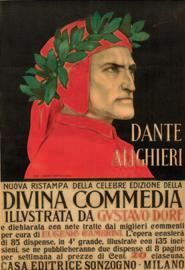
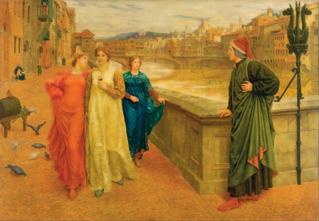
Even though it was written seven centuries ago, Dante’s Divine Comedy is essential reading today. Literature professor Joseph Luzzi explains why as he leads three all-day seminars focusing on each of the Divine Comedy’s three canticles: Inferno, Purgatorio, and Paradiso. He highlights the originality and brilliance of Dante’s poetic vision, explaining how this great poem became one of the most influential works in literary history.
OCT 4 Inferno
NOV 1 Purgatorio
DEC 13 Paradiso
3-session series: Sat., Oct. 4, Nov. 1, and Dec. 13, 10 a.m.–3 p.m.; detailed program information on website; CODE 1J0-490; Members $200; Nonmembers $240
Individual sessions: Sat., Oct. 4 (CODE 1J0-490A); Sat., Nov. 1 (CODE 1J0-490B); Sat., Dec. 13 (CODE 1J0-490C); 10 a.m.–3 p.m.; detailed program information on website; Members $80; Nonmembers $95

Fred
Fred Astaire was one of the 20th century’s greatest magicians: His sorcery depended on making some of the most complex dancing ever seen on the screen seem as effortless as breathing. Whether partnering with Ginger Rogers, Rita Hayworth, Cyd Charisse, or a hat rack—or dancing on the ceiling or on roller skates—he made it appear easy and elegant. Revered as a genius by everyone from Balanchine to Baryshnikov, Astaire appeared in a total of 133 dance numbers in 31 films, many of which are considered classics of movie choreography.
Media historian Brian Rose surveys the sweep of Astaire’s remarkable career in a program illustrated with video clips.
Tues., Sept. 16, 6:30 p.m.; CODE 1J0-487; Members $20; Nonmembers $25
With its magic spells, soaring lyricism, and playful plot, A Midsummer Night’s Dream is one of the most beloved and frequently performed of Shakespeare’s comedies Joseph Luzzi, a professor of literature at Bard College, explores the poetic forms and central themes of A Midsummer Night’s Dream as he situates the play within both the broader arc of Shakespeare’s career and his evolving understanding of the comic genre. Early modern notions of gender and love as well as the ways in which Shakespeare’s comedies enable characters to shift their identities in unique and innovative ways are highlighted.
Thurs., Sept. 18, 6 p.m.; CODE 1J0-488; Members $20; Nonmembers $25
Music, Dance, and Society in

The waltz, that intoxicating and graceful music with its simple melodies and sinuous rhythms, has never gone out of style. The music and dance that blossomed in Vienna and then spread like a mania through Europe has long defined “romantic.” Springing from rough peasant revelries into the more refined strata of aristocratic and bourgeois entertainment, the waltz proclaimed a new freedom of sexual expression and individual liberties in the early 19th century. It was a musical form and a dance that changed history.
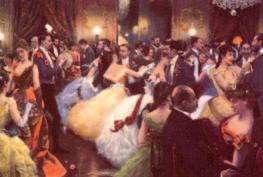

Classical music and opera expert Saul Lilienstein transports participants to some of the world’s great ballrooms as he traces that development through the beautiful music of great waltz composers such as Johann Strauss Sr., Josef Lanner, and Johann Strauss Jr.; film clips; vivid illustrations; and the firsthand reports of entranced and aghast observers of the phenomenon.
Fri., Sept. 26, 10 a.m.–2:30 p.m.; detailed information on website; CODE 1M2407; Members $80; Nonmembers $95
Cookbook author and host of “The Great British Baking Show” Paul Hollywood comes from a long line of bakers. Hollywood started baking as a teenager, working in his father’s bakery before going on to be head baker at some of the most exclusive hotels in the United Kingdom. Now he can be seen on screens around the world, judging amateur bakers’ creations.
Drawing on his new book, Celebrate: Joyful Baking All Year Round, and decades of baking experience, Hollywood talks with Joe Yonan, Washington Post food and dining editor, about his career and recipes for every holiday and occasion.
Celebrate (Bloomsbury) is available for sale and signing.
Thurs., Oct. 2, 7:30 p.m.; Meyer Auditorium, National Museum of Asian Art; CODE 1J0-491; Members $25; Nonmembers $35

Few national cinemas offer as compelling a mirror to social transformation as Italy’s. In the decades following World War II, Italian filmmakers shaped a legacy of innovation, reflection, and artistry that still resonates on the global stage. A four-part series explores pivotal moments in Italian cinema—from the birth of Neorealism to the bold experimentation of contemporary filmmakers. Art historian Jennie Hirsh guides participants through the films, directors, and cultural shifts that defined this cinematic evolution, offering a deeper understanding of how Italian film captured and questioned its time. Through clips, discussion, and visual analysis, Hirsh illuminates the aesthetic and ethical foundations of each period in Italian cinema and its enduring legacy in world film.
OCT 5 Neorealism and the Rise of Postwar Cinema (1943–1950s)
NOV 9 La Dolce Vita and the Road to Recovery (1950s–1960s)
DEC 7 Projections of Fascism (1970s–1980s)
JAN 11 Contemporary Crises and Postmodern Projections (1990s–Present)
4-session series: Sun., Oct. 5, Nov. 9, Dec. 7, and Jan. 11, 1 p.m.; CODE 1D0-120; Members $90; Nonmembers $110
Individual sessions: Sun., Oct. 5 (CODE 1D0-120A); Sun., Nov. 9 (CODE 1D0-120B); Sun., Dec. 7 (CODE 1D0-120C); Sun., Jan. 11 (CODE 1D0-120D); 1 p.m.; Members $25; Nonmembers $35


Edgar Allan Poe, the storyteller who gave us such enduring classics as “The Purloined Letter,” “The Tell-Tale Heart,” and “The Fall of the House of Usher,” is often referred to as America’s Shakespeare. With his tales of mystery and imagination, Poe both broke new literary ground and set the pattern for generations of writers to come. At the same time, in mysterious and lyrical poems such as “The Raven” and “Annabel Lee,” Poe struggled to perfect what he called “the rhythmical creation of beauty in words.”
On the anniversary of his death—Oct. 7, 1849—author Daniel Stashower explores the life and art of the original “man in black,” as actor Scott Sedar offers a dramatic reading of Poe’s most powerful works, giving voice to his haunting genius.
Tues., Oct. 7, 6:45 p.m.; CODE 1D0-113; Members $20; Nonmembers $25

Audiences love the spectacle and the sets, adore the costumes, and thrill to the brilliance and beauty of the choreography and the performers, and above all are moved and exalted by the music. Ballet made a rapid journey from French courtly dance to an internationally beloved artform, with its path traveling directly through the magnificent scores of composers like Debussy, Stravinsky, Copland, and, of course, Tchaikovsky. Speaker and concert pianist Rachel Franklin uses live piano demonstrations and historic and contemporary film clips to illustrate how the music from such ballet masterpieces as Giselle, Swan Lake, Daphnis and Chloë, Le Sacre du Printemps, and Appalachian Spring became a treasured part of our cultural landscape. 4-session series: Tues., Oct. 7–28, 12 p.m.; detailed program information on website; CODE 1K0-606; Members $100; Nonmembers $120
The Brand That Revolutionized American Cooking Long before Martha Stewart became a household name, there was Betty Crocker. Born in 1921 as part of a promotional campaign by the Washburn-Crosby flour company, Betty Crocker wasn’t a real person, but she quickly became one of the most trusted resources in American kitchens. Her warm, reassuring presence graced a long-running radio show, and her line of cake mixes helped homemakers embrace convenience.
When Betty Crocker’s Picture Cook Book debuted in 1950, its sales rivaled those of the Bible. Today, the Betty Crocker Cookbook is in its 13th edition, with more than 75 million copies sold. Cultural historian Leslie Goddard explores the remarkable story of Betty Crocker: how she was created, why her cookbook has endured, and how her brand’s lasting influence was built on emotional connection and consumer engagement.
Wed., Oct. 8, 7 p.m.; CODE 1CV-070; Members $20; Nonmembers $30


Enter a world colored by mythology, history, romance, and spiritual exploration with Japanese traditional theater, a living art form that stretches back centuries. Its many varieties range from masked Noh dance-dramas during medieval times to the Tokugawa/Edo period’s boisterous Kabuki plays and Bunraku puppet theater to the Shingeki (literally “new drama”) forms inspired by Western stage plays and the Butoh dance-theater.
Linda Ehrlich, who has taught Asian studies and traditional theater for several universities, delves into these traditions. Ehrlich shows images of beautiful costumes, evocative masks, and a strong gestural language. She also discusses the transmission of conventions from generation to generation, as well as examples of innovation and renewal.
Thurs., Oct. 9, 6:45 p.m.; CODE 1J0-494; Members $20; Nonmembers $25
About 2,500 years ago, Plato wrote a set of dialogues that depict Socrates in conversation. The way Socrates asks questions and the reasons why amount to a whole way of thinking. This is the Socratic method—one of humanity’s great achievements. More than a technique, the method is an ethic of patience, inquiry, humility, and doubt.
Drawing on his book The Socratic Method: A Practitioner’s Handbook, Ward Farnsworth of the University of Texas School of Law explains what the Socratic method is, how it works, and why it matters in law, politics, the classroom, or tackling life’s big questions at the kitchen table.
Thurs., Oct. 9, 6:45 p.m.; CODE 1K0-629; Members $20; Nonmembers $30


Before the rise of Nazism, German Jewish culture experienced a renaissance in education and the arts, but that growth quickly contracted under the restrictions initiated by the Nazi regime. Established in 1933, the Kulturbund (the Culture League of German Jews) provided an outlet where many artists expelled from German institutions could present theater, cabaret, concerts, opera, and lectures before exclusively Jewish audiences.
Did they provide consolation for Jewish artists and audiences in a time of oppression? Or did the emulation of “normal” cultural life contribute to the false assumption that Germany might still hold a future for them? Michael Brenner, chair of Israel studies at American University and professor of Jewish history and culture at Ludwig Maximilian University in Munich, explores the history of the Kulturbund and its impact on German Jews under Hitler’s rule.
Wed., Oct. 15, 6:30 p.m.; CODE 1H0-879; Members $20; Nonmembers $30
A police detective down on his luck. A beautiful woman with a shady past. Dead bodies in dark corridors and dim light seeping through venetian blinds. A world of chain-smoking deceivers, drifters, loners, con artists, and killers—double-dealing their way toward an uncertain and possibly fatal future. This is film noir, one of the most original and stunningly stylized film genres of the 1940s and ’50s, whose impact still resonates in popular culture today. The protagonists ranged from Bogart, Bacall, Mitchum, Crawford, Stanwyck, Garfield, Lupino, and Lancaster to equally impactful partners in screen crime, including Lizabeth Scott, Robert Ryan, and Richard Conte.

In a multimedia series featuring memorable sequences and archival illustrations, film historian Max Alvarez examines the origins and achievements of the actors, directors, writers, and craftspeople behind this remarkably enduring genre.
3-session series: Thurs., Oct. 16–30, 6:30 p.m.; detailed program information on website; CODE 1K0-625; Members $85; Nonmembers $105
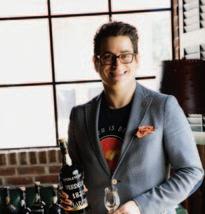
Spend three fascinating Friday evenings expanding your knowledge of the world of wine as you sip along with sommelier Erik Segelbaum in a series of delectable adventures. Each immersive program includes a curated personal wine tasting kit to enhance the experience.
OCT 10 Portugal Perfection
The wine culture of Portugal represents virtually every style imaginable. This wide range of options and flavor profiles, along with hundreds of indigenous grapes, puts Portuguese wine at the forefront of every wine pro’s mind. Moreover, the wines from such popular regions as the Douro Valley and Alentejo compete with the best wines of the world at a fraction of the price. Explore Portugal through the lens of some of its most compelling wines.
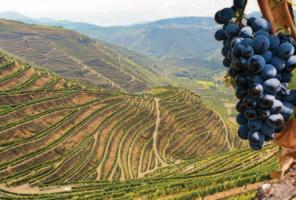

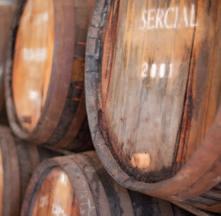
NOV 14 Madeira, a Gift From an Island to the World Madeira, which originated on its namesake Portuguese island, was consumed at the signing of the Declaration of Independence and at many milestones of early American history. George Washington, Betsy Ross, and Thomas Jefferson were huge aficionados of Madeira. In fact, Virginia and much of the U.S. owe their wine industry to Jefferson’s attempts to recreate Madeira at Monticello. Dig into the many styles of this glorious food-friendly wine from a gorgeous island.
DEC 12 Sonoma Uncorked
The geography of Sonoma County, California, ranges from coastal and inland mountains to sweeping valleys and high benchlands. Each distinctive geographical feature imparts its own elements of terroir, ensuring wines with both regional identity and a sense of individuality. With a seemingly endless range of microclimates and growing conditions, Sonoma’s wines run the gamut from cool coastal appellations to hot inland valleys. Enjoy this delicious deep dive into the varieties, flavors, and terroirs of Sonoma.
3-session series: Fri., Oct. 10, Nov. 14, and Dec. 12, 6 p.m.; CODE WINE2026; Members $180; Nonmembers $225
Individual sessions: Fri., Oct. 10 (CODE 1T0-036); Fri., Nov. 14 (CODE 1T0-037); Fri., Dec. 12 (CODE 1T0-038), 6 p.m.; Members $70; Nonmembers $85
Wine-tasting kit information: The cost includes a curated personal tasting kit with enough wine for one person to sample the full lineup of wines. Additional participants must register individually to receive their own tasting kit, which is an essential component of the workshop. Kits are available during two scheduled pick-up times the day before the program and the day of the program, 11 a.m.–5 p.m., at Shilling Canning Company (360 Water St. SE, Washington, DC; Metro: Navy Yard-Ballpark station, Green line).
NOTE: Patrons will receive additional wine tasting kit pick-up information by email prior to the program.
Due to state and federal laws, Smithsonian Associates cannot ship wine kits. However, SOMLYAY may be able to provide kits to participants outside the Washington, D.C., area (who must cover shipping costs). Please contact erik@thesomlyay.com for more information
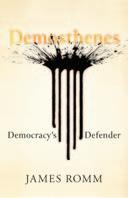
In the spring of 340 B.C.E., Philip of Macedon seized a town in central Greece, a base from which he could march on Athens. In the fierce debates about how to respond to the rising threat in the north, Demosthenes, the greatest orator of his day, goaded the Athenian Assembly into confronting Philip on the field of battle. Athens later fell into the grip of Alexander the Great, Philip’s son and successor, but Demosthenes had established himself as one of history’s most eloquent defenders of democracy.
James Romm, professor of classics at Bard College, explores the mind of the man who took on the challenge of saving Greek freedom and examines how democracies can be destroyed by internal divisions, such as those ignited by the insultfilled verbal brawls of Athenian orators. His new book, Demosthenes: Democracy’s Defender (Yale University Press), is available for purchase.
Mon., Oct. 20, 6:45 p.m.; CODE 1K0-630; Members $20; Nonmembers $30
Fantasy is now an established and lucrative genre with a dizzying array of popular iterations across literature, games, and film. But the story of how hobbits, dungeons, knights, and dragons took over our collective imaginations is a long, complex one, with many surprising twists and turns. Historian Justin M. Jacobs explores the origins of the modern fantasy genre, from the evolution of obscure Gothic novels to the iconic works of J.R.R. Tolkien, Robert E. Howard, and the co-creators of Dungeons & Dragons.
OCT 22 Evolution of Fantastic Storytelling
OCT 29 Robert E. Howard and Pulp Fantasy
NOV 5 J.R.R. Tolkien and High Fantasy
NOV 12 The Creation of Dungeons & Dragons
NOV 19 Fantasy after Dungeons & Dragons
5-session series: Wed., Oct. 22–Nov. 19, 6:45 p.m.; detailed program information on website; CODE 1J0-497; Members $110; Nonmembers $135

Individual sessions: Wed., Oct. 22 (CODE 1J0-497A); Wed., Oct. 29 (CODE 1J0-497B); Wed., Nov. 5 (CODE 1J0-497C); Wed., Nov. 12 (CODE 1J0-497D); Wed., Nov. 19 (CODE 1J0-497E); 6:45 p.m.; Members $25; Nonmembers $35
While its heyday was the 1940s and ’50s, the Western is making a comeback in the third decade of the 21st century. From a list of great films, historian Clay Jenkinson has chosen 10 standouts including Red River starring John Wayne and Montgomery Clift; High Noon, starring Gary Cooper; the remake of True Grit by the Coen brothers; and The Good, the Bad, and the Ugly, starring Clint Eastwood. Jenkinson shares his criteria for choosing these Westerns, shows clips and stills from the films, and examines the history and future of the genre as a central expression of the American frontier.

Mon., Oct. 27, 6:30 p.m.; CODE 1K0-627; Members $35; Nonmembers $45

Religious symbols for Buddhism, Islam, Christianity, Judaism, and Hinduism
Mysticism—the awareness and the conscious unmediated experience of an ultimate reality, divinity, or God—captures the essence of religious experience. Comparative religion scholar Graham Schweig surveys the role mysticism plays in world religions and considers if there is a core mystical experience among these traditions or if each is shaped by unique cultural, linguistic, and religious contexts. Using a selection of sacred texts, music, art, and other forms of expression, Schweig covers the meaning, role, and practice of mysticism in Hindu, Buddhist, Jewish, Christian, and Islamic forms. In the process, he discusses what mystical traditions reveal about the nature of relationships between humans and the divine and considers the meaning of mysticism for the contemporary world. Thurs., Oct. 30, 6:30 p.m.; CODE 1M2-418; Members $30; Nonmembers $45
Ever since early humans began to gather, they attempted to understand the universe by telling tales. While composers have frequently enjoyed exploring the macabre and Gothic horror, classical repertory is equally graced with gentler stories, some of which end happily ever after.

In the perfect follow-up to Halloween, speaker and concert pianist Rachel Franklin revisits her seasonal tour through the most mysterious corners of classical music and illustrates how fantasy and folklore have inspired some of history’s greatest composers. From ghouls and ghosts to faeries, trolls, and mystical maidens, she surveys the scariest of orchestral compositions, operatic explorations of the occult, and masterpieces inspired by the tales of Charles Perrault, Hans Christian Andersen, and the Brothers Grimm.
4-session series: Mon., Nov. 3–24, 12 p.m.; detailed program information on website; CODE 1K0-628; Members $100; Nonmembers $125
Alfred Hitchcock often called Psycho “a big joke” and was horrified to discover that audiences “were taking it seriously.” But his flip attitude can’t disguise what made his 1960 film a landmark in movie history. Working without his usual menu of big budgets, big stars, and glamorous locations, Hitchcock crafted a masterful study of fear and anxiety that still has the power to shock. Psycho’s influence can be felt not only in every horror and thriller film of the last 60-plus years but also in serious works of art in every medium. Media historian Brian Rose explores Hitchcock’s achievement, examining how the film was made and how it continues to haunt our cultural imagination.
Fri., Oct. 31, 12 p.m.; CODE 1J0-499; Members $25; Nonmembers $35
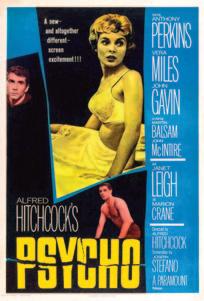
Theatrical release poster for Psycho, 1960
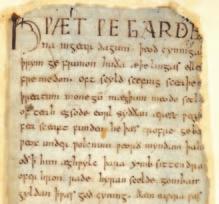
folio of the epic poem Beowulf, written primarily in the West Saxon dialect of Old English
How is the word “lord” related to a loaf of bread? Where did the pronoun “she” come from? Who first said (erroneously) that two negatives make a positive? Is “must” being replaced by “hafta?” Why and how does a living language like English change?
The answer, in a word, is fascinating.
Linguist and English-language historian Anne Curzan, a professor of English and linguistics at the University of Michigan, covers the language’s shifting landscape from Beowulf to blogging. English continues to evolve, says Curzan, especially given the impact of modern technologies. Despite a fear that texting and tweeting could destroy the written language, linguists who track the effects of the internet and social media don’t suggest a decay in the language. After what English has undergone over the past millennium, you “hafta” believe it will survive.
Thurs., Nov. 13, 6:30 p.m. CODE 1M2-416; Members $30; Nonmembers $45
Choral music is a glorious genre in which the sound of a multitude of voices embraces an audience. Opera and classical music expert Saul Lilienstein leads an in-depth consideration of the great choral works and the composers who wrote them from the Renaissance through the Romantic century, including compositions by William Byrd, Palestrina, Handel, Bach, Mozart, Haydn, Beethoven, Berlioz, and Verdi. Emphasis is placed on the most enduring and beloved masterpieces, with special focus on compositional technique, polyphonic nature, influences among composers, and the relationship between the secular and the sacred. Programs are highlighted by film clips and musical recordings.
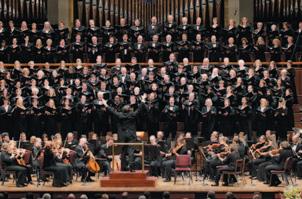

5-session series: Tues., Nov. 18–Dec. 16, 12 p.m.; detailed program information on website; CODE 1M2-420; Members $110; Nonmembers $135
All Smithsonian Associates online programs are closed captioned
Unless noted, all programs are presented on Zoom; listed times are Eastern Time. Online registration is required.

Tucked away in Siberia, there are furry, four-legged creatures with wagging tails and floppy ears that are as docile and friendly as any lapdog. But, despite appearances, these are not dogs but foxes. They are the result of one of the most astonishing experiments in breeding ever undertaken, intended to speed up thousands of years of evolution into a few decades. Evolutionary biologist Lee Alan Dugatkin takes you inside this groundbreaking experiment by Soviet biologists Dmitri Belyaev and Lyudmila Trut, begun in 1959.
Mon., Aug. 11, 6:45 p.m.; CODE 1J0-455; Members $20; Nonmembers $25
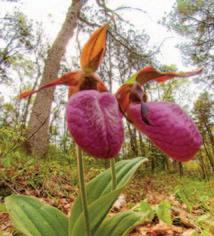

Deep ocean exploration has come long way since 1882, when Jules Verne published Twenty Thousand Leagues Under the Sea. Using an extraordinary suite of tools, marine scientists and explorers are returning with stunning knowledge about the universe beneath the waves: fantastical new species; astonishing insights into how Earth’s life-support systems work; and high-resolution seafloor maps that reveal hidden landscapes and buried treasures that even Verne could never have dreamed of, including a 17th-century Spanish galleon carrying a cargo some estimate to be worth more than $17 billion. Journalist and author Susan Casey dives into the latest discoveries in the deep ocean, offering a glimpse of the tantalizing mysteries that still lie on its floor.
Tues., Aug. 12, 6:45 p.m.; CODE 1K0-611; Members $25; Nonmembers $30
Steve Nicholls, a wildlife filmmaker with a lifelong interest in botany and horticulture, explores the extraordinary beauty of the mysterious and romantic orchid. But in nature, such beauty always serves a purpose. For orchids, it’s a way of ensuring pollination. The flowers need to entice insects to move pollen from plant to plant, often using nectar as a reward. But there’s a dark side to orchids: a world of trickery and deception. About half of all orchids don’t produce nectar, so why do insects pollinate them? Some lure insects with the promise of sex, and others have equally fiendish ways of convincing insects to visit the blooms. Still others provide the ingredients for male bees to make a perfume that females find irresistible. Nicholls provides insights into the intricate dynamics of this fascinating botanical seduction.
Fri., Aug. 15, 12 p.m.; CODE 1K0-600; Members $25; Nonmembers $30
Geologist Kirt Kempter leads a fascinating tour that explores the tectonic origin and geology of the four main islands of Channel Island National Park. They are part of the western Transverse Ranges, an unusual east–west trending mountain range in Southern California, representing a block of continental crust that has been rotated more than 90 degrees clockwise during the development of the San Andreas fault system. The region’s oldest mammoth fossils date to just over 80,000 years ago, and Kempter examines how as the sea level rose more than 350 feet in the past 18,000 years, islands formed and the stranded mammoths began to decrease in size due to a shrinking habitat.
Mon., Aug. 18, 7 p.m.; CODE 1NV-138; Members $25; Nonmembers $30

In the heart of Los Angeles, geologic processes have conspired to create the richest Ice Age fossil site on Earth. For more than 50,000 years, underground crude oil has seeped to the surface, trapping plants and animals in the La Brea Tar Pits and painting a picture of a lost world.

The rich fossil treasure troves preserved in petroleum are being used both to reveal the past and help plan for a climate-resilient future in one of the continent’s most populous and biodiverse regions. Emily Lindsey, associate curator and excavation site director at La Brea Tar Pits & Museum, leads a virtual tour of the site spanning 20 million years, from ancient seabed to LA’s modern car culture.
Mon., Aug. 25, 7 p.m.; CODE 1NV-140; Members $25; Nonmembers $30

Every year, the climate is affected by gigantic amounts of carbon dioxide that enter the air. But CO2 isn’t merely the dangerous byproduct of burning fossil fuels—it is also fundamental to how the Earth works. It has kept the planet’s climate livable, its air breathable, and its oceans hospitable to complex life for hundreds of millions of years. In short, says science journalist Peter Brannen, it is the most important substance on Earth. But how can something so essential to life be capable of destroying it?
Brannen examines how CO2 has been responsible for the planet’s many deaths and rebirths, for shaping the evolution of life, and for the development of modern human society. His book The Story of CO2 Is the Story of Everything: How Carbon Dioxide Made Our World (HarperCollins) is available for purchase.

Thurs., Sept. 4, 6:45 p.m.; CODE 1K0-603; Members $20; Nonmembers $25
Mystery writer Agatha Christie, who was born on Sept. 15, 1890, is renowned for her captivating plots and creative ways of killing off victims—including poison. The surreptitious ways it can be administered, the characteristic symptoms different ones produce, and the difficulty in detecting some of these killer chemicals make them perfect for a whodunit.
Kathryn Harkup, a former chemist, investigates the science behind some of Christie’s more unusual choices of deadly substances, their use in real-life murder cases, and the feasibility of obtaining, administering, and detecting them in Christie’s time and today.
Harkup’s new book, V is for Venom: Agatha Christie’s Chemicals of Death (Bloomsbury), is available for purchase.
Mon., Sept. 15, 12 p.m.; CODE 1T0-029; Members $20; Nonmembers $25
Whether it be fish nurseries, migratory bird pit stops, or natural water filterers, wetlands provide near-limitless value to humans and wildlife around the world. Since the Revolutionary War, more than 100 million acres of wetlands have been drained for human use.
Liana Vitali, a naturalist and educator at Jug Bay Wetlands Sanctuary in Upper Marlboro, Maryland, offers an audio-visual journey into the marshes, ponds, swamps, and peat bogs of North America to discover just how important these ecosystems are to life on Earth. Through images and films, Vitali shares how wild and wonderful wetlands can be.
Tues., Sept. 16, 6:45 p.m.; CODE 1K0-612; Members $25; Nonmembers $30

These programs are part of Smithsonian Associates
The Hidden World of Manufacturing

We live in a world surrounded by a multitude of manufactured products—furniture, technology, clothing, even food. Yet the processes behind how these things come into our lives remain largely invisible. Where do the things we buy come from? How are they made? How do they end up in our hands?
Tim Minshall, a professor at the University of Cambridge, traces the paths everyday items travel, from design and creation to delivery. He explores the world of manufacturing, uncovering the workings of a system that produces and distributes everything from cars and cakes to phones, planes, medications, and medical devices—shaping nearly every aspect of our daily lives. His book, How Things Are Made: A Journey Through the Hidden World of Manufacturing (Ecco), is available for purchase.
Tues., Sept. 30, 12 p.m.; CODE 1D0-112; Members $20; Nonmembers $25

Humans and orchids have a long and storied history. Confucius wrote about them in 500 B.C.E., and over the millennia, orchids have found their beautiful place in society. Learn about highlights, including the Vanilla orchid, Darwin’s orchid, ghost orchid, and the Cattleya orchids named after first ladies. Orchid expert Barbara Schmidt discusses the sometimes unexpected presence of orchids throughout history.
Tues., Sept. 30, 7 p.m.; CODE 1E0-0ZT; Members $25; Nonmembers $30
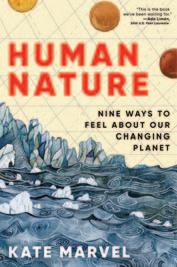
The following programs are part of Smithsonian Associates
Climate change isn’t happening just in the computer models used to test out disaster scenarios—it’s also happening to us. As such, it is important to focus not only on the challenges we face on our rapidly changing Earth but also on how these changes make us feel, says climate scientist Kate Marvel. Interweaving earth science, mythology, natural history, and personal narrative, Marvel charts an inspiring and surprisingly funny course through our world. She tells a story of villains and heroes; glee at the marvels of Earth and the workings of physics; and volcanoes, hubristic emperors, and ancient sequoia groves. Marvel’s new book, Human Nature: Nine Ways to Feel About Our Changing Planet (HarperCollins), is available for purchase.
Thurs., Oct. 9, 6:30 p.m.; CODE 1T0-034; Members $20; Nonmembers $30
Through photography and storytelling, naturalist Matt Felperin explores the variety of avian species found on the seaside and inland ecosystems of the California coast. In virtual explorations, follow Felperin into the lush redwood forests, home of the American Dipper, Wilson’s Warbler, Pacific-slope Flycatcher, and the threatened California Spotted Owl. The open chapparal and oak woodlands at Pinnacles National Park host birds such as the Canyon Wren, Prairie Falcon, California Scrub-Jay, and the rare California Condor. The rocky coastline is home for wading and diving birds such as Wandering Tattler, Black Oystercatcher, Pelagic Cormorant, and Pigeon Guillemot. Offshore, discover an array of ocean-going birds such as the Black-footed Albatross, Sooty Shearwater, Leach’s Storm-Petrel, and Parasitic Jaeger—and there’s a chance of something rarer flying in from across the Pacific.
Tues., Oct. 14, 7 p.m.; CODE 1NV-050; Members $25; Nonmembers $35

Launched in December 2021, NASA’s James Webb Space Telescope is a space-based observatory optimized for infrared light and designed to complement and extend the discoveries of the Hubble Space Telescope. Astrophysicist and author Mario Livio showcases the remarkable images obtained by the mission and interprets the telescope’s discoveries to date.
The latter include the detection of Neptune’s auroras; the determination of the composition of the atmospheres of extrasolar planets; and the detection of some of the earliest, most distant galaxies that formed in the universe. They were revealed to be bright, massive, and characterized by unusual chemical features. Another discovery is that the early universe was populated by an abundance of compact red-color sources of unknown origin. Livio guides participants through these findings, as well as others.
Thurs., Oct. 16, 6:30 p.m.; CODE 1M2-412; Members $25; Nonmembers $35


John Muir founded the Sierra Club in 1892, igniting a national passion for nature through his vivid storytelling that made plants and animals come alive. Born in Dunbar, Scotland, in 1838, Muir did farm work for years before attending the Wisconsin–Madison. At age 31, while working as a shepherd in the Sierra Nevada foothills, Muir discovered his true calling—the great outdoors. For the next 45 years, he explored and wrote passionately about the California mountains, the Cascades of Washington and Oregon, the Arizona desert, and the glaciers of Alaska.
Zoologist Fred Bercovitch traces Muir’s life and enduring legacy and reveals his surprising connection to the Smithsonian.
Tues., Oct. 21, 7 p.m.; CODE 1CV-071; Members $20; Nonmembers $30
By understanding how plants work, you can be more successful at caring for them, since knowledge of basic plant biology can be a valuable tool for indoor gardeners fascinated by plants and their unique characteristics. Virginia Velez Thaxton, a horticulturist with the Interiors Section of Smithsonian Gardens, explores the essential factors plants need from their environment and offers an overview of the physiological processes at play. She examines how plants respond to varying light, water, temperature, and nutrients so that optimum growing conditions can be provided. The presentation also provides a range of practical facts on topics from bromeliads to succulents and pruning to propagation.
Tues., Oct. 28, 12 p.m.; CODE 1NV-153; Members $25; Nonmembers $35

During World War II, physicist Luis W. Alvarez achieved major breakthroughs in radar, played a key role in the Manhattan Project, and served as a scientific observer at the bombing of Hiroshima. In 1968 he won the Nobel Prize in Physics. At the end of his life, he collaborated with his son on a project to demonstrate that an asteroid impact was responsible for the extinction of the dinosaurs.
Alvarez was also a combative, ambitious figure who testified as a government witness at the security hearing that destroyed the public career of his friend J. Robert Oppenheimer. Author Alec Nevala-Lee shares ideas, lessons, and anecdotes from Alvarez’s life.
Nevala-Lee’s book Collisions: A Physicist’s Journey from Hiroshima to the Death of the Dinosaurs (W.W. Norton) is available for purchase.
Mon., Nov. 3, 7 p.m.; CODE 1CV-072; Members $20; Nonmembers $30


One of the oldest libraries in the world is also one of the most remote, located at the Orthodox Monastery of St. Catherine in the Sinai Desert. Within fortress-like walls at the base of Mount Sinai is a trove of handwritten manuscripts in ancient languages, including many that were scrubbed off and overwritten. Michael B. Toth, president of R.B. Toth Associates, discusses how technical experts, scientists, and scholars used advanced imaging systems in such an isolated spot amid political and security risks to reveal the hidden undertexts. As a result of this work, images of the monastery’s texts are now available online for digital research.
Thurs., Nov. 6, 6:45 p.m.; CODE 1J0-502; Members $30; Nonmembers $45
Art is all around us. It excites us, enriches our lives, and enlivens our imaginations. To truly appreciate any work of art, we need to understand the context and culture in which it was created. That’s why Smithsonian Associates offers a World Art History Certificate Program.
The wide-ranging offerings are designed to provide a global perspective on art and architecture and draw on the Smithsonian’s world-class collections, the rich resources of other Washington institutions, and museums from around the world.
Look for World Art History Certificate throughout the program guide to see current listings. Get started today and complete the certificate requirements at your own pace. Registration is ongoing; Credits are counted from day of registration and are not given retroactively.
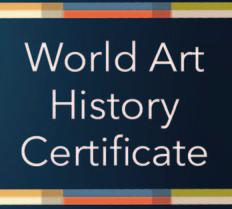

World Art History Certificate elective: Earn ½ credit
Throughout her long career as a sculptor, painter, and printmaker, Elizabeth Catlett (1915–2012) celebrated and memorialized Black people—especially Black women. Her philosophy was that “art should come from the people and be for the people.” Catlett helped to shape the aesthetics of the Black Arts Movement of the 1960s and 1970s even though the U.S. government deemed her an “undesirable alien” while she was working in Mexico, making her unable to permanently return to the United States until 2002.
Michele L. Simms-Burton, a former professor of African American studies, examines why Catlett was among the most formidable artists of the 20th century.
Thurs., Aug. 7, 6:30 p.m.; CODE 1J0-480; Members $20; Nonmembers $25
Acquire your own limited-edition Elizabeth Catlett print with the Smithsonian Associates Art Collectors Program. See pg. 61.
World Art History Certificate elective: Earn ½ credit


Paris, renowned for its signature landmarks like the Eiffel Tower and Notre-Dame Cathedral, blends rich history with modern innovation. While celebrated for its classical beauty, the city has evolved into a dynamic hub for cutting-edge design. Art historian Jennie Hirsh leads an illustrated walk through the city, highlighting some of the most innovative and visually striking buildings of the modern era. She explores notable sites including the Pyramid extension by I.M. Pei at the Louvre; the remarkable transformation of the former Gare d’Orsay train station into the Musée d’Orsay by Gae Aulenti; the Philharmonie de Paris by Jean Nouvel; the sleek Institut du Monde Arabe by Jean Nouvel; and the monumental Bibliothèque Nationale by Dominique Perrault. The survey concludes with a look at distinctive residential buildings such as Gérard Grandval’s Les Choux de Créteil and OMA’s avant-garde Villa dall’Ava.
Fri., Aug. 8, 12 p.m.; CODE 1D0-107; Members $20; Nonmembers $25
World Art History Certificate elective: Earn 1 credit
Giorgione, Titian, Tintoretto, and Veronese
The art of painting in 16th-century Venice was largely transformed by four great artists whose innovative approaches would shape the art of both their contemporaries and generations to come. In this lavishly illustrated seminar, art historian Sophia D’Addio of Columbia University explores the works of Giorgione, Titian, Tintoretto, and Veronese, highlighting their unique stylistic and compositional approaches, as well as the critical reception of their works.
Sat., Aug. 9, 10 a.m.–3 p.m.; detailed program information on website, CODE 1M2-399; Members $80; Nonmembers $95

What time does the program end? Unless noted, Smithsonian Associates programs run 1 hour 15 min.–2 hours, including Q&A
World Art History Certificate elective: Earn ½ credit
Elaine Ruffolo, a Florence-based Renaissance art historian, examines the rich heritage of Italian art and architecture

The most powerful of Renaissance Italian courts competed to become centers of literary and artistic patronage, scholarly research, and learning. In Umbria, Federico da Montefeltro was nicknamed “The Light of Italy” for his contributions to the era’s culture. With his beloved wife Battista Sforza at his side, Federico’s court of Urbino came to reflect the virtues of the period in art, intellect, justice, governance, and public welfare.
Artists from Italy and abroad, including della Francesca, Raphael, and Titian, flourished under patronages here, shaping the Montefeltro family’s aristocratic identity and the politics of style. With the Ducal Palace providing the splendid backdrop, Urbino became the ideal princely court among the most illustrious of Europe. Return to the 15th century with Ruffolo to experience a Renaissance court in all its glory.
Fri., Sept. 19, 12 p.m.; CODE 1D0-111; Members $25; Nonmembers $30
The spirit of the Middle Ages is potently felt in the Umbrian hill town of Assisi. A holy city for Christians and a UNESCO World Heritage Site, Assisi has long been a destination for pilgrims wanting to see the places where St. Francis was born, worked, and died.
Many of the most important examples of Umbria’s incomparable patrimony of paintings and architecture are found here. The great frescoes portraying Francis’ life—attributed to Giotto—are often referred to as bellwethers of Renaissance art. They hang in the Basilica of St. Francis, an architectonic complex that has heavily influenced the development of art and architecture. Ruffolo leads a journey into Assisi’s extraordinary art, breathtaking architecture, and enduring sacred legacy.
Fri., Oct. 3, 12 p.m.; CODE 1D0-115; Members $25; Nonmembers $30

and Online Program In Person

World Art History Certificate elective: Earn ½ credit
With Elaine Ruffolo
Elaine Ruffolo, who surveys Italy’s artistic and architectural heritage during her Art-full Fridays series, has cultivated a devoted audience. Here’s a rara opportunità to meet the Florence-based art historian while she’s visiting Washington, D.C., this summer. While the day of the week—Thursday—might be a surprise, the topic of her presentation isn’t: Ruffolo focuses on the place she calls home. She reveals a city in which narrow alleys lead to graceful piazzas where the massive scale of churches and civic buildings—and the splendid artworks they house—reflect the wealth once generated by the city’s thriving economy. The cradle of the Renaissance, Florence is replete with frescoes, paintings, sculpture, and architecture created in an era in which art was the cornerstone of cultural activity.
Works by Giotto, Masaccio, Brunelleschi, Donatello, Botticelli, Michelangelo, da Vinci, and Raphael are all concentrated in the city’s churches, museums, and public spaces. Join Ruffolo as she traces the art and history of this jewel of a city, from the dawn of the Renaissance to the era of the Medici dukes.
Thurs., Aug. 14, 6:45 p.m.; Ripley Center; CODE 1D0-116; Members $25; Nonmembers $30
World Art History Certificate elective: Earn ½ credit
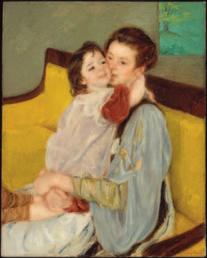
Mary Cassatt was the most celebrated and innovative female artist of her time and the only American to exhibit with the renowned Impressionist group of French painters. Invited into their circle by Edgar Degas, Cassatt became a supportive participant in organizing the group’s independent exhibitions.
For Degas, Cassatt and her sister Lydia posed for genre scenes of a feminine world—genteel depictions of ladies at tea, at the theater, reading, and sewing. After Lydia’s death, Cassatt’s subject matter turned to domestic scenes of mothers and children as the focus of the latter half of her life. Art historian Bonita Billman examines the range of Cassatt’s oeuvre and the media she used in her work; her role within the Impressionists; and her emphasis on scenes of women and children as her own family dynamics changed.
Thurs., Aug. 21, 12 p.m.; CODE 1M2-401; Members $25; Nonmembers $30
World Art History Certificate core course: Earn 1 credit
Where India Met Greece

Situated between India, Persia, and the Greco-Roman world, the region of greater Gandhara produced artwork that blended influences and ideas from many cultures. Treasure hoards including glasswork from Rome, Central Asian jewelry, and South Asian ivory are a testament to the region’s central role in long-distance commerce. Art historian Robert DeCaroli examines the origins of the region’s material culture and the role of trade in the exchange of ideas.
Sat., Sept. 6, 10 a.m.–4 p.m.; detailed program information on website; CODE 1J0-478; Members $100; Nonmembers $120

World Art History Certificate core course: Earn 1 credit
Expressionism as an artistic movement developed in the early 20th century, a period in which new and influential explorations of psychology and human behavior were taking place. Artists began to look at the world much more subjectively, often distorting its depictions to achieve an emotional effect. For these creators, personal experiences and feelings became more important than physical reality, and the art inspired by Expressionism still holds the power to move and challenge viewers.
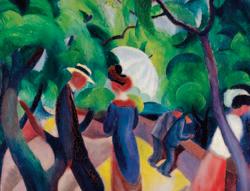
4-session series: Wed., Sept. 3–24, 10:30 a.m.; detailed program information on website; CODE 1K0-598; Members $100; Nonmembers $120 Promenade by August Macke, 1913
Art historian Joseph Paul Cassar traces the movement’s roots, meaning, influences, and most notable practitioners, including artists of the Die Brücke collective and the Der Blaue Reiter group.
World Art History Certificate elective: Earn ½ credit
Few architects have reshaped the way we see buildings—and experience space—quite like Frank Gehry. Famed for his deconstructivist style, Gehry blurs the boundaries between architecture and sculpture, creating structures that ripple, fold, and shimmer like living works of art. From the soaring curves of the Guggenheim Museum Bilbao to the gleaming surfaces of the Walt Disney Concert Hall in Los Angeles, his imaginative designs have made an indelible mark on skylines around the world.
Art historian Jennie Hirsh surveys Gehry’s remarkable career, examining his contributions to residential, commercial, cultural, and educational buildings in North America and Europe. Beginning with the Gehry Residence—the suburban California home he reimagined for his family—Hirsh traces the evolution of Gehry’s unique postmodern vision.
Mon., Sept. 8, 6:45 p.m.; CODE 1D0-110; Members $20; Nonmembers $25
World Art History Certificate elective: Earn ½ credit for each
In this ongoing series, Renaissance art expert Rocky Ruggiero spotlights the significant collections of sometimes-overlooked museums and churches throughout Italy.
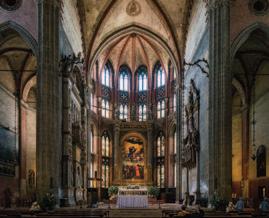
The Church of Santa Maria Glorioso dei Frari, commonly known as Frari’s Church or the Church of the Frari, is a minor basilica in Venice, Italy. It has an unassuming façade, but don’t let that fool you: The church contains splendors from over 500 years of Venetian history, including the Assumption of the Virgin and Pesaro Madonna by Titian, St. John the Baptist by Donatello, the Virgin Mary Enthroned with Christ Child and Saints triptych by Giovanni Bellini, and an altar piece by Titian. Ruggiero delves into the church and the treasures inside.
Mon., Aug. 25, 6:30 p.m.; CODE 1J0-476; Members $30; Nonmembers $40
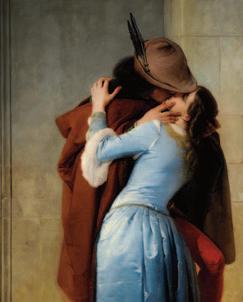
The Pinacoteca di Brera, or Brera Art Gallery, is the main public gallery for paintings in Milan. It grew out of the Brera Academy, an academy of fine arts in Milan, and in 2024 added a new modern art wing. With masterpieces by Andrea Mantegna, Giovanni Bellini, Piero della Francesca, Tintoretto, Caravaggio, and Francesco Hayez, the Pinacoteca is a pre-eminent collection of Italian paintings from the 13th to the 20th century. Ruggiero analyzes this impressive art gallery.
Mon., Sept. 15, 6:30 p.m.; CODE 1J0-486; Members $30; Nonmembers $40
The Capitoline Museums are a group of art and archaeological museums located on top of Capitoline Hill, which was the political and religious center of ancient Rome. The museums’ collections focus on the history of Rome and include masterpieces such as the equestrian statue of Marcus Aurelius, the “Capitoline Wolf,” the “Dying Gaul,” both a reconstruction of the Colossal Statue of Constantine and fragments of the original, and a bust of Medusa by Bernini. Ruggiero highlights these impressive collections.
Wed., Oct. 15, 6:30 p.m.; CODE 1J0-495; Members $30; Nonmembers $40


The Basilica of Santa Croce, located in Florence, Italy, is the largest Franciscan church in the world and an excellent example of Italian Gothic architecture. Many of its 16 chapels are decorated with frescoes by Giotto and his disciples. The museum complex consists of the church, chapels, monastery, bell tower, and an area for exhibitions. Ruggiero leads a visual journey of the church and museum of Santa Croce, focusing on key artworks, architectural features, and notable moments from the church’s history.
Mon., Nov. 10, 6:30 p.m.; CODE 1J0-503; Members $30; Nonmembers $45
LIFELONG LEARNING
World Art History Certificate elective: Earn ½ credit
Japanese gardens are among the calmest and most restorative spaces ever conceived by the human imagination. Their aesthetic seems effortless, but they are the product of great artifice. Often they evoke broad landscapes distilled in a tiny space. Sometimes they refer to famous poems or to ideas. Others are spaces for quiet and profound contemplation. Timeless yet constantly evolving, apparently simple and yet carefully constructed, these gardens express the fruitful contradictions that lie within the Japanese soul.
Art historian Nigel McGilchrist explores centuries of breathtaking Japanese gardens, tracing the historical and cultural influences—both foreign and domestic—that have shaped their distinctive artistry of plants, rocks, and water.
Tues., Sept. 9, 12 p.m.; CODE 1M2-403; Members $25; Nonmembers $30

The histories of the two greatest academic centers of England—Oxford and Cambridge—reach back to the 12th and 13th centuries. Many notable people have studied and taught at both institutions, such as Charles Darwin at Cambridge and J.R.R. Tolkien at Oxford—not to mention royals, prime ministers, and Nobel Prize winners.
The college libraries evoke the Middle Ages; the quads, chapels, and gardens remain places of serene beauty; the River Thames and the River Cam enhance the landscape with natural beauty; and the significant amounts of preserved historical and cultural material continue to attract scholars. Historian Gary Rendsburg of Rutgers University, who has resided and conducted academic research at both Oxford and Cambridge, brings the verve and culture of these great university towns to life, sharing history flavored with a pleasant dose of Anglophilia.
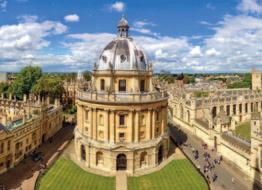
Oxford
Sat., Sept. 20, 10 a.m.–1 p.m.; detailed program information on website; CODE 1M2-404; Members $40; Nonmembers $50
World Art History Certificate elective: Earn 1 credit
The country houses of England are among the country’s greatest treasures. Art historian Bonita Billman surveys a selection of these grand estates, known for their architectural magnificence, spectacular decorative art and art collections, and glorious gardens.
They represent a wide range of styles and periods, among them the Elizabethan and Jacobean influences reflected in Hardwick Hall and Chatsworth; the Baroque exuberance of Castle Howard, the inspiration for Evelyn Waugh’s Brideshead; Chiswick House, in the Palladian style; the Gothic Revival majesty of Balmoral Castle; and Eltham Palace, a medieval structure with an Art Deco addition. Two Rothschild family estates, Ascott, with its medieval half-timbered look, and Waddesdon Manor, in the style of a French Renaissance chateau, are mansions in historicist styles.
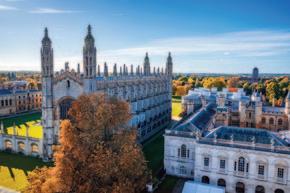

Sat., Sept. 27, 10 a.m.–4:15 p.m.; detailed information on website; CODE 1M2-408; Members $100; Nonmembers $120
World Art History Certificate elective: Earn ½ credit
Art of Gustav Klimt and Egon
At the turn of the 20th century, Vienna was the capital of a great empire ruled by the Hapsburgs. The city was a center of political power as well as avant-garde culture, home to some of the world’s greatest composers, architects, writers, and artists. Two who helped define this age of glamour, elegance, and decadence were artists Gustav Klimt and Egon Schiele.
Art critic and adviser Judy Pomeranz explores the lives and art of these extraordinary individuals and the age in which they lived. She examines how they were influenced by their time and place and illustrates how powerfully they reflected them in works both beautiful and shocking.
Tues., Sept. 30, 6:45 p.m.; CODE 1K0-613; Members $25; Nonmembers $30

Book

World Art History Certificate elective: Earn ½ credit
The Book of Kells, housed at Trinity College in Dublin, is one of the most spectacular works of art in history. Yet it nearly did not survive the tumultuous era in which it was created, when Viking raiders plundered the monasteries of Ireland and Britain and even held similar manuscripts for exorbitant ransoms.
Historian Jennifer Paxton looks at the diverse strands that influenced the Book of Kells, from indigenous Irish elements to motifs imported from the Christian Near East and the Germanic and Scandinavian north. She also discusses its influence on the revival of Celtic art from the 19th century to the present.
Mon., Sept. 29, 6:30 p.m.; CODE 1M2-409; Members $30; Nonmembers $40
World Art History Certificate elective: Earn 1/2 credit
Historian Clay Jenkinson, who has previously shared his list of notable photographs, returns with another selection of 10 magnificent images—this time Pulitzer Prize winners—to explore how great photographs epitomize a moment or an era, capture an extraordinary event, provide a window into the human condition, or fill us with appreciation and wonder.
Jenkinson’s list includes William Gallagher’s photo of the hole in Adlai Stevenson’s shoe (1953); William Beall’s “Faith and Confidence” (1957), capturing a policeman bending down to a 2-year-old boy; Yasushi Nagao’s “Tokyo Stabbing” (1961); and Nat Fein’s “Babe Ruth Bows Out” (1949), among others. Jenkinson covers the backstory of each image and its influence on the world. Audience members are encouraged to nominate their own favorites to add to the discussion.
Mon., Oct. 6, 6:30 p.m.; CODE 1K0-621; Members $35; Nonmembers $45

What time does the program end? Unless noted, Smithsonian Associates programs run 1 hour 15 min.–2 hours, including Q&A
World Art History Certificate elective: Earn ½ credit
An Introduction to Iconography
The study of iconography—how symbols and allegories function in art—offers a way to understand masterpieces that have puzzled scholars for generations. In the first program of a series, art historian Noah Charney demonstrates how learning the meaning of a few dozen recurring symbols allows viewers to decode most pre-modern Western art.
Artworks once served as books for the illiterate, with a limited number of literary sources forming the basis for most Old Master paintings. Charney examines how viewers of the time decoded images through an allegorical and symbolic lens as he focuses on Jan Van Eyck’s The Arnolfini Portrait of 1434, a masterpiece filled with symbolism that opens the door to this lost visual language.

Mon., Oct. 6, 12 p.m.; CODE 1H0-881; Members $30; Nonmembers $45
World Art History Certificate core course: Earn 1 credit
In a 4-session survey, art historian Joseph P. Cassar traces how the creative legacies of centuries of ancient civilizations affected the art of the Early Renaissance. He examines the collective influences of the Paleolithic and Neolithic eras; the ancient Near East; Egypt and its pharaohs; the Aegean world; and Greek, Etruscan, and Roman art.

Cassar discusses several works from each period—including paintings from Altamira and Lascaux caves, Neolithic monuments from Malta, the Temple of Knossos in Crete, the pyramids of Giza and Hatshepsut, and Etruscan burial art—leading up to the artistic climax reflected in Giotto’s magnificent Scrovegni Chapel in Padua.
4-session series: Wed., Oct. 8–29, 10:30 a.m.; detailed program information on website; CODE 1K0-610; Members $100; Nonmembers $120
World Art History Certificate core course: Earn 1 credit
The style of 19th-century French painting known as Impressionism—filled with color, light, and brilliant brushwork—was seen as an act of rebellion when it appeared in the 1870s. The work of these modern masters—notably Manet, Monet, Renoir, Degas, Cassatt, and Morisot—led in turn to the radical art of the Post-Impressionists. During the 1880s and ’90s Seurat, Cézanne, Gauguin, and Van Gogh used vivid colors to depict subjects from real life but in ways that were not always fully realistic.
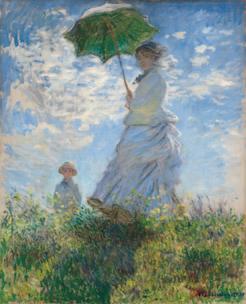
In a richly illustrated series, art historian Nancy G. Heller explores the sources, masterpieces, and later influences of these rebels, including their impact on 20th-century art.
5-session series: Tues., Oct. 7–Nov. 4, 6:30 p.m.; detailed program information on website; CODE 1M2-410; Members $110; Nonmembers $135
World Art History Certificate core course: Earn 1 credit

From colossal Olmec heads to the paintings of Frida Kahlo, Aztec temples to Mexican murals, this survey of Latin American art sweeps through the centuries and locations including ancient Mesoamerica, coastal Peru, and the top of the Andes. Michele Greet, professor of art history at George Mason University, traces the significant creators, works, influences, and trends that defined and shaped the arts of Latin America from their earliest expression through the 19th and 20th centuries. 4-session series: Thurs., Oct. 9–30, 12 p.m.; detailed program information on website; CODE 1J0-493; Members $100; Nonmembers $120
World Art History Certificate elective: Earn ½ credit Frank
Emerging in late 19th-century Europe, the Arts and Crafts movement was a response to the Industrial Revolution’s mass-produced goods and poor labor conditions. Emphasizing craftsmanship, simplicity, and honesty in materials, the movement championed design that clearly expressed a building’s structure and function—free of excessive ornamentation.
In the United States, the architecture of Frank Lloyd Wright consistently reflected the core values of the Arts and Crafts movement, reinterpreted through his modern lens. His outlook is reflected in designs from the geometric clarity of the Robie House and Unity Temple to later works like the textile block houses, Fallingwater, and the Usonian homes. Architectural historian Bill Keene explores how Wright’s vision aligned with—and redefined—the Arts and Crafts movement.
Wed., Oct. 8, 7 p.m.; CODE 1NV-149; Members $25; Nonmembers $35
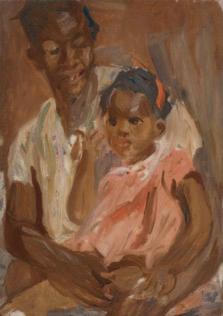
World Art History Certificate elective: Earn ½ credit
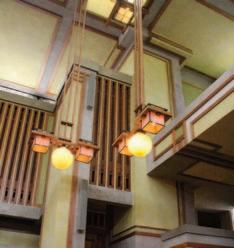
Portraiture often suggests dusty oil paintings in ornate frames—static likenesses frozen in time. Building on centuries of tradition, contemporary creators are reimagining portraiture in provocative ways through painting, sculpture, photography, and video. Art historian Jennie Hirsh surveys portraiture in the late 20th and early 21st century, highlighting artists who have expanded its visual language to explore questions of memory, performance, and presence.
From self-portraits to intimate depictions of others, their work invites viewers to consider how likeness is constructed and understood from visual and cultural perspectives. The artists discussed range from Dawoud Bey to Lucian Freud, Alice Neel to Cindy Sherman—each challenging and redefining what it means to see and be seen.
Mon., Oct. 20, 6:45 p.m.; CODE 1D0-119; Members $20; Nonmembers $30
World Art History Certificate elective: Earn ½ credit
Leonardo da Vinci epitomizes the ideal of the Renaissance man: He was a brilliant artist, visionary thinker, engineer, and scientist. Educated in Florence, he began his career in the service of Ludovico Sforza, the duke of Milan, where he lived and worked from around 1482 to 1499.
During that time, he connected with poets, mathematicians, philosophers, musicians, and other humanists at the ducal court, stimulating his creative and intellectual practices. Art historian Jill Pederson explores how Leonardo’s presence in this dynamic environment shaped his artistic output in works like The Last Supper, Portrait of Cecilia Gallerani (also known as Lady with an Ermine), and the Vitruvian Man Mon., Oct. 20, 12 p.m.; CODE 1T0-035; Members $20; Nonmembers $30

World Art History Certificate elective: Earn ½ credit
Edward Hopper is widely regarded as one of the great American realists of modern art. Trained by Robert Henri, he is considered an heir of the Ashcan School. His work captures a quintessential view of New York City during a specific moment that became part of our cultural fabric. Many of the noir films of the 1940s and 1950s reflect Hopper’s personal vision of city life as seen in his paintings: austere, silent, moody, and lonely.

Art historian Bonita Billman explores the highlights of Hopper’s career and examines the sociopolitical and cultural contexts in which he lived and worked. Drawing on images of such paintings as Automat, Chop Suey, New York Movie, and Nighthawks, she discusses Hopper’s influences and his enduring relevance.
Thurs., Oct. 23, 6:30 p.m.; CODE 1M2-415; Members $25; Nonmembers $35
World Art History Certificate core course: Earn 1 credit

Northern Renaissance artists were famous for imbuing their paintings with religious and philosophical symbolism. Grounded in the medieval belief of the world as the book of God, this approach remained central to the visual culture of the Low Countries throughout the 15th and 16th centuries, especially in the wake of the Protestant Reformation.
In a daylong seminar, art historian Aneta Georgievska-Shine highlights these “painted treatises” and explores their symbolic content in a range of genres, from beautiful domestic interiors to market scenes and images of children’s games.
Fri., Oct. 24, 10 a.m.–4 p.m.; detailed program information on website; CODE 1K0626; Members $100; Nonmembers $125
World Art History Certificate elective: Earn ½ credit
Between about 900 and 630 B.C.E., Assyria (in today’s northern Iraq) became an empire that dominated the Middle East from Iran to Egypt. Assyrian kings ordered the construction of magnificent royal palaces whose internal walls were lined with huge stone reliefs that illustrate accomplishments of these rulers. The monarch is sometimes depicted accompanied by the crown prince, a bearded man wearing a diadem. He was central to the future of Assyria, and magnificent installation ceremonies intended to ensure a stable future were held.
There was often intense rivalry for the position of crown prince that led to rebellion and murder. Paul Collins, head of the Middle East department at the British Museum, explores some of the dramatic moments when the transfer of royal power threatened Assyria.
Mon., Oct. 27, 12 p.m.; CODE 1J0-498; Members $20; Nonmembers $30
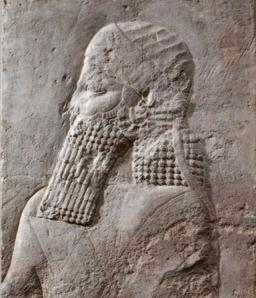
Read more about programs in this guide on our website. Search by code or date. Expanded program descriptions, presenters’ information, and more at SmithsonianAssociates.org.

World Art History Certificate elective: Earn 1 credit
Despite widespread fears, the world didn’t end in the year 1000. Instead, the new millennium sparked a remarkable revival of artistic expression, particularly in 11th- and 12th-century France. From that renewal emerged the Romanesque style—bold, inventive, and deeply rooted in faith— reshaping the spiritual and cultural landscape of medieval Europe.
Art historian Janetta Rebold Benton explores this vibrant period through its cathedrals, churches, cloisters, and monasteries—beautiful spaces created to instruct and inspire. Through the lenses of architecture, sculpture, painting, and the decorative arts, Benton reveals how Romanesque art defined an age of cultural awakening and communal devotion, stretching from mountain monasteries in France to pilgrimage centers from Italy to Spain and beyond.
2-session series: Sat., Nov. 1 and 8, 1–3:30 p.m.; detailed program information on website; CODE 1D0-118; Members $90; Nonmembers $110
From the 19th century to the early years of the next, technical developments in electricity, heating and cooling, and building methods—as well as innovations such as the elevator—offered new opportunities in construction that set off rivalries in the race to create the tallest building in the world.
During the first three decades of the 20th century, high-rise architecture incorporated the prevailing historic styles. Modernism, with its simplified forms and rejection of ornamentation, became the dominant style during the post-World War II period, with the “glass box” skyscraper becoming ubiquitous across the world. Bill Keene, a lecturer in architecture and urban studies, traces developments in technology, materials, and regulations that accelerated the rise of the skyscraper.
Mon., Nov. 3, 7 p.m.; CODE 1NV-154; Members $25; Nonmembers $35
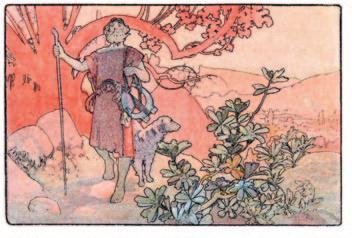
Trade, and Pilgrimage
World Art History Certificate elective: Earn 1 credit

Noted for its organic, sinuous, and seductive styles, the Art Nouveau movement in art and design flowered only for a decade or so but had a long-lasting influence and popularity. Art historian Bonita Billman explores Art Nouveau’s characteristics; its French origins; major creators including Louis Comfort Tiffany, Rene Lalique, Alphonse Mucha, and Charles Rennie Mackintosh; and its interpretations in Britain and America.
Sat., Nov. 15, 10 a.m.–4 p.m.; CODE 1M2-419; detailed program information on website; Members $100; Nonmembers $125
The merchants, explorers, pilgrims, and refugees who traveled the often-treacherous trade routes of Asia from the second century B.C.E. through the 15th century brought treasured commodities and new ideas with them. Crossing massive mountain ranges, unforgiving deserts, and dangerous open seas, these routes could be a source of untold riches or of disaster. Although many trade networks extended beyond Asia into Europe and Africa, Robert DeCaroli, professor of art history at George Mason University, focuses on the ways Asian societies participated in, benefited from, and were changed by trade and travel.
4-session series: Tues., Nov. 18–Dec. 9, 6:30 p.m.; detailed program information on website; CODE 1J0-501; Members $100; Nonmembers $125

World Art History Certificate
elective: Earn ½ credit Composition Studies
INSTRUCTOR: Shahin Talishkhan
ONLINE: Sat., Aug. 2–16, 2 p.m.; CODE 1E00YU; Members $135; Nonmembers $150
Digital Drawing Fundamentals
INSTRUCTOR: Mike O’Brien
ONLINE: Wed., Aug. 6, 6 p.m.; CODE 1E00XY; Members $60; Nonmembers $75
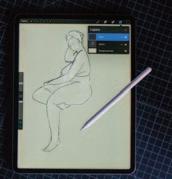
NEW | Studying Edward Hopper
INSTRUCTOR: Sandra Gobar
IN PERSON: Sun., Aug. 3 and 10, 11 a.m.; Ripley Center; CODE 1E0-0WS; Members $135; Nonmembers $160

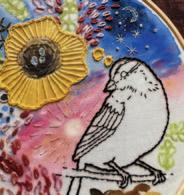
Painted Embroidery Workshop
INSTRUCTOR: Heather Kerley
ONLINE: Sat., Aug. 2, 11 a.m.; CODE 1E00YS; Members $60; Nonmembers $75
Color Theory and Practice
INSTRUCTOR: Theresa Otteson
ONLINE: Thurs., Sept. 15–Oct. 20, 6:45 p.m., no class Sept. 22 and Oct. 13; CODE 1E0AAR; Member $165; Nonmember $190
Color Theory and Chroma-psychology
INSTRUCTOR: Lori VanKirk Schue
ONLINE: Thurs., Sept. 18, 1 p.m.; CODE 1E0-ABS; Members $55; Nonmembers $70
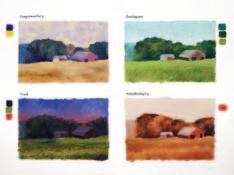
By Theresa Otteson

Hues in Harmony
Maximizing Your Palette
INSTRUCTOR: Nick Cruz Velleman
ONLINE: Sun., Sept. 21–Oct. 19, 1:30 p.m.; CODE 1E0-ACS; Members $190; Nonmembers $225
Visual Journaling: Creativity
Workout
INSTRUCTOR: Renee Sandell
TWO ONLINE OPTIONS: Sat., Sept. 27, 1 p.m. (CODE 1E0-ACH); Sat., Dec. 6, 1 p.m. (CODE 1E0-ACR); Members $80; Nonmembers $95
Join practicing artists with deep knowledge about artist's materials and mediums who provide information and guidance on a variety of studio art topics. Each lecture explores an art medium, studio materials, or a specific art technique, with built-in time for your questions to be answered. Sessions are designed for artists of any level to learn or revisit material and tool details as well as ask questions that have arisen from their practice.

Learn all about paper for your different types of projects. Aspects such as weight, tooth, origin, costs, production, color additives, and which papers suit which mediums are covered.
INSTRUCTOR: Lori VanKirk Schue
ONLINE: Wed., Sept. 17, 1 p.m.; CODE 1E0-0YZ; Members $25; Nonmembers $30
This practical lecture covers essential tools, materials, tips, and tricks that are critical to the success of your journey as a watercolorist. Learn how to choose the best materials to prepare you for an easier start; enhance your painting experience; and confidently fit materials to your budget.
INSTRUCTOR: Cindy Briggs

ONLINE: Sat., Oct. 4, 11 a.m.; CODE 1E0-0ZC; Members $25; Nonmembers $30

Learn about where graphite is sourced, what makes it different from other drawing mediums, grading hardness, and brands you can count on for consistency. Other topics include appropriate erasers, colored graphite, and the medium’s shiny finish.
INSTRUCTOR: Lori VanKirk Schue
ONLINE: Wed., Oct. 8, 1 p.m.; CODE 1E0-0ZA; Members $25; Nonmembers $30

Why Artists Love It
Charcoal is in every artist’s toolkit. As a medium it can stand alone, work with other mediums, or simply begin the artistic process. Learn how it is made, what makes the best charcoal, the different types, and whether it’s a dry or wet medium.
INSTRUCTOR: Lori VanKirk Schue
ONLINE: Wed., Oct. 15, 1 p.m.; CODE 1E0-0ZB; Members $25; Nonmembers $30
For those getting started in oil painting, the array of available materials can feel overwhelming. This lecture offers an introduction to the basics needed to create a streamlined, effective setup.
INSTRUCTOR: Nick Cruz Velleman
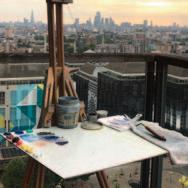
ONLINE: Sat., Nov. 1, 10:15 a.m.; CODE 1E0-0ZD; Members $25; Nonmembers $30
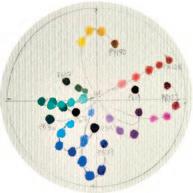
By Peter Donahue
Learn how pigment properties influence the way paints mix and get a map for navigating, planning, and predicting paint mixtures. This is a good introduction to science-based color theory for artists.
INSTRUCTOR: Peter Donahue
ONLINE: Sat., Sept. 20, 1 p.m.; CODE 1E0-ADC; Members $25; Nonmembers $30


INSTRUCTOR: Kate Lewis
ONLINE: Mon., Sept. 29–Oct. 27, 10:30 a.m., no class Oct. 13, CODE 1E0-AAL; Members $215; Nonmembers $240
INSTRUCTOR: Sushmita Mazumdar
ONLINE: Mon., Sept. 29–Nov. 10, 12 p.m., no class Oct. 13; CODE 1E0-AAM; Members $105; Nonmembers $140
INSTRUCTOR: Sue Fierston
ONLINE: Sun., Oct. 4, Nov. 1, and Nov. 22, 10 a.m.; CODE 1E0-ACL; Members $160; Nonmembers $185
INSTRUCTOR: Renee Sandell
ONLINE: Wed., Oct. 8–Nov. 12, 3:30 p.m.; CODE 1E0-ABH; Members $225; Nonmembers $260
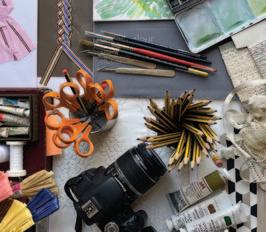
By

By
INSTRUCTOR: Lori VanKirk Schue
ONLINE: Thurs., Oct. 9 and 16, 1 p.m.; CODE 1E0-ABT; Members $105; Nonmembers $130
World Art History Certificate elective: Earn 1/2 credit Composition Studies
INSTRUCTOR: Shahin Talishkhan
ONLINE: Wed., Nov. 5−19, 6:30 p.m.; CODE 1E0-ABN; Members $135; Nonmembers $160
Meet our Instructors
View portfolios of work by our instructors at SmithsonianAssociates.org/art instructors
Read more about programs in this guide on the website. Search by code or date. Expanded program descriptions, presenters’ information, and more at SmithsonianAssociates.org.
INSTRUCTOR: George Tkabladze
TWO IN-PERSON OPTIONS: Tues., Sept. 16–Nov. 18, 10:30 a.m., no class Sept. 23 and Nov. 11 (CODE 1E0-AAV); Tues., Sept. 16–Nov. 18, 2 p.m., no class Sept. 23 and Nov. 11 (CODE 1E0-AAW); Ripley Center; Members $275; Nonmembers $310
INSTRUCTOR: Shahin Talishkhan
IN PERSON: Sat., Nov. 1–Dec. 13, 10:15 a.m., no class Nov. 29; Ripley Center; CODE 1E0ACC; Members $235; Nonmembers $270
INSTRUCTOR: Shahin Talishkhan
IN PERSON: Sat., Nov. 1–Dec. 13, 2:15 p.m., no class Nov. 29; Ripley Center; CODE 1E0ACD; Members $260; Nonmembers $295

Digital Drawing Fundamentals
INSTRUCTOR: Mike O’Brien
ONLINE: Wed., Sept. 17, 6:15 p.m.; CODE 1E0-ABK; Members $60; Nonmembers $75
Line, Shape, and Shading
INSTRUCTOR: Desarae Lee
ONLINE: Thurs., Sept. 18 and 25, 7:15 p.m.; CODE 1E0-ABW; Members $90; Nonmembers $115
INSTRUCTOR: Josh Highter
ONLINE: Sun., Sept. 21–Nov. 9, 10:15 a.m.; CODE 1E0-ACT; Members $270; Nonmembers $305
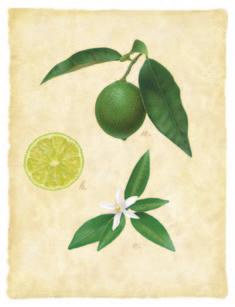
Working in charcoal, set up interesting still-life compositions and learn how to accurately represent the objects in your drawing using a variety of techniques.
INSTRUCTOR: Michelle Cobb
ONLINE: Wed., Oct. 8–Nov. 5, 1 p.m.; CODE 1E0-0ZF; Members $185; Nonmembers $220
Scientific illustration is art in the service of science. In this class on biological illustration, work with traditional media to learn how to create visuals that interpret data and scientific concepts.
INSTRUCTOR: Scott Rawlins
ONLINE: Wed., Oct. 8–Nov. 12, 11 a.m.; CODE 1E0-0ZE; Members $225; Nonmembers $260

Pull out your sketchbook and pencil to take an artful break as you explore the Smithsonian while drawing fall-themed objects from vast, fascinating collections.
INSTRUCTOR: Morgan Kuster

ONLINE: Thurs., Oct. 9–Nov. 13, 12 p.m.; CODE 1E0-ADB; Members $95; Nonmembers $125; individual sessions also available
Procreate for iPad contains powerful editing features, empowering artists to reference and remix existing images. Combine with Smithsonian Open Access— where you can download, share, and reuse millions of the Smithsonian’s images—and you have a recipe for tremendous artistic expression.
INSTRUCTOR: Mike O’Brien
ONLINE: Wed., Nov. 5, 6:15 p.m.; CODE 1E0-0ZG; Members $60; Nonmembers $75

Techniques Perspective
INSTRUCTOR: Desarae Lee
ONLINE: Thurs., Oct. 2 and 9, 7:15 p.m.; CODE 1E0-ABY; Members $90; Nonmembers $115
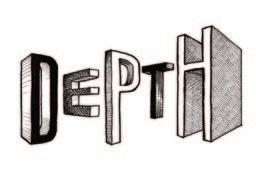
By Desarae Lee
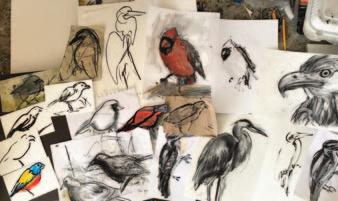
By Marcie Wolf-Hubbard
INSTRUCTOR: Marcie Wolf-Hubbard
ONLINE: Thurs., Oct. 23–Nov. 20, 6:45 p.m.; CODE 1E0-ABZ; Members $170; Nonmembers $210
INSTRUCTOR: Lori VanKirk Schue
ONLINE: Thurs., Oct. 23 and 30, 1 p.m.; CODE 1E0-ABV; Members $135; Nonmembers $160
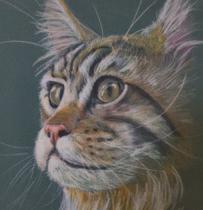
IN PERSON
An Introduction to Watercolor: Loose and Beautiful
INSTRUCTOR: Lubna Zahid
IN PERSON: Wed., Oct. 8–29, 10:15 a.m.; Ripley Center; CODE 1E0-ABG; Members $165; Nonmembers $190
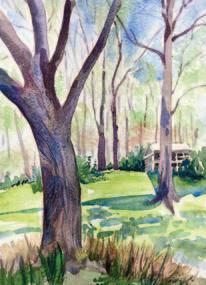
By Lubna Zahid

Oil Painting
INSTRUCTOR: Shahin Talishkhan
IN PERSON: Sun., Nov. 2–Dec. 14, 10:15 a.m., no class Nov. 30; Ripley Center; CODE 1E0-ACW; Members $240; Nonmembers $275
Oil Painting
INSTRUCTOR: Shahin Talishkhan
IN PERSON: Sun., Nov. 2–Dec. 14, 2:15 p.m., no class Nov. 30; Ripley Center; CODE 1E0-ACX; Members $255; Nonmembers $290

NEW CLASSES
Watercolor Magic
Historic House Portraits
Learn about the principles and elements of design as you compose your own “portrait” of a historic house. Choose from locations like Mount Vernon, Gunston Hall, Monticello, Highland, and the White House or your own home.
INSTRUCTOR: Sharon McKittrick Boyle
IN PERSON: Tues., Sept. 16–Oct. 28, 12:30 p.m., no class Sept. 23; Ripley Center; CODE 1E0-0ZZ; Members $185; Nonmembers $220

Step into the vibrant world of acrylic painting in this introductory course, which provides foundational information. You work on guided projects, from abstract to landscape to still life, exploring basic composition principles to create visually engaging pieces.

INSTRUCTOR: Carolyn Marshall
Wright
IN PERSON: Tues., Sept. 16–Oct. 28, 6 p.m., no class Sept. 23; Ripley Center; CODE 1E0-AAA; Members $235; Nonmembers $270
Studio Arts classes are taught by professional artists and teachers. View detailed class descriptions and supply lists at SmithsonianAssociates.org/studio
Wonder of Watercolor
In this beginner class, learn critical components of the foundations of watercolor such as the paint-to-water ratio to mix the right value of colors, painting techniques, and value studies.
INSTRUCTOR: Lorrie Herman
IN PERSON: Tues., Sept. 16–Nov. 4, 11 a.m., no class Sept. 23 and Oct. 14; Ripley Center; CODE 1E0-AAY; Members $200; Nonmembers $235

60
Autumn
Sketching in the Smithsonian Gardens
October and November are magical in the Enid A. Haupt Garden. Sketch in this stunning garden using watercolors to capture the changing light of the season.
INSTRUCTOR: Sue Fierston
IN PERSON: Sat., Oct. 5 and Nov. 2, 10:15 a.m.; Ripley Center; CODE 1E0-AAF; Members $125; Nonmembers $150
Jump into Acrylics

By Sue Fierston
Jump-start your journey into acrylic painting with this one-day immersive workshop. Get introduced to the basics and first steps, including how to use materials; touch on essential color theory; and explore this exciting medium with hands-on guided projects.
INSTRUCTOR: Carolyn Marshall Wright IN PERSON: Sat., Oct. 25, 10:30 a.m.; Ripley Center; CODE 1E0-AAE; Members $140; Nonmembers $155
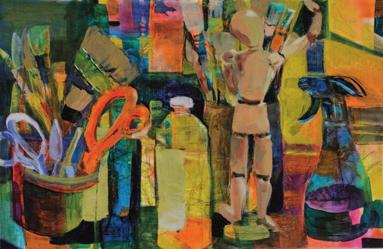
Express your flair as you paint a floor art piece. With expert guidance, you design a distinctive mat to accent your home or give as a gift.
INSTRUCTOR: Mel Curtin
IN PERSON: Wed., Oct. 15, 1 p.m.; Ripley Center; CODE 1E0-0ZP; Members $215; Nonmembers $230

World Art History Certificate elective: Earn 1/2 credit
60
The 1860s Vision of Cézanne Figures, Portraits, Landscapes, and Still Lifes
Absorb yourself in the vibrant, expressive realm of Cézanne. Peer into the mindset of the beloved Impressionist and create inspired art in your choice of watercolor, pastel, or oils.
INSTRUCTOR: Sandra Gobar
IN PERSON: Sun., Nov. 2–16, 11 a.m.; Ripley Center; CODE 1E0-AAG; Members $125; Nonmembers $150

Read more about programs in this guide on our website. Search by code or date. Expanded program descriptions, presenters’ information, and more at SmithsonianAssociates.org.
INSTRUCTOR: Josh Highter
ONLINE: Mon., Sept. 15–Nov. 17, 6:30 p.m., no class Sept. 22 and Oct. 13; CODE 1E0-AAS; Members $275; Nonmembers $310
INSTRUCTOR: Lubna Zahid
ONLINE: Tues., Sept. 30–Dec. 2, 10 a.m., no class Nov. 11 and 25; CODE 1E0-ABE; Members $275; Nonmembers $310
INSTRUCTOR: Lubna Zahid
ONLINE: Tues., Sept. 30–Dec. 2, 5 p.m., no class Nov. 11 and 25; CODE 1E0-ABF; Members $275; Nonmembers $310
INSTRUCTOR: Eric Westbrook
ONLINE: Wed., Oct. 8–Nov. 12, 7 p.m.; CODE 1E0-ABM; Members $225; Nonmembers $260
World Art History Certificate elective: Earn ½ credit
Sketching Turner
Expressing Atmosphere and Skies in Watercolor
INSTRUCTOR: Nick Cruz Velleman
ONLINE: Mon., Oct. 20–Nov. 17, 2:30 p.m.; CODE 1E0-AAN; Members $190; Nonmembers $225
World Art History Certificate elective: Earn ½ credit
Drawing Light
How the Masters Did It in Color
INSTRUCTOR: Nick Cruz Velleman
ONLINE: Mon., Oct. 20–Nov. 17, 10 a.m.; CODE 1E0-AAQ; Members $190; Nonmembers $225
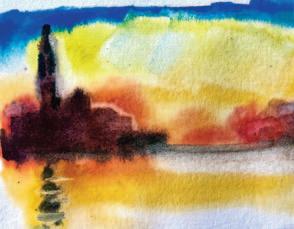

If you have some watercolor experience, go beyond the basics of paint application and learn how to construct strong, vibrant, personality-filled painting while still receiving guidance on foundational components.
INSTRUCTOR: Josh Highter
This three-day watercolor workshop over the course of one week covers the basics that you need to get your watercolor practice started.
INSTRUCTOR: Jean Pederson
ONLINE: Mon., Sept. 15, Wed., Sept. 17, and Fri., Sept. 19, 1 p.m.; CODE 1E0-0ZN; Members $125; Nonmembers $150

ONLINE: Thurs., Sept. 18–Nov. 13, 10:30 a.m., no class Oct. 2; CODE 1E0-ABQ; Members $275; Nonmembers $310

Discover the secrets of the Impressionists through the timeless art of still-life painting as you work from life to develop observational skills and explore the study of color.
INSTRUCTOR: Michelle Cobb
ONLINE: Tues., Oct. 7–Nov. 4, 1 p.m.; CODE 1E0-AAB; Members $200; Nonmembers $235
INSTRUCTOR: Theresa Otteson
ONLINE: Mon., Oct. 27–Nov. 17, 6:45 p.m.; CODE 1E0-AAT; Members $165; Nonmembers $190
INSTRUCTOR: Cindy Briggs
ONLINE: Tues., Dec. 2 and Wed., Dec. 3, 6 p.m.; CODE 1E0-AAC; Members $135; Nonmembers $150
Expression and Sketching in Watercolor
INSTRUCTOR: Nick Cruz Velleman
ONLINE: Wed., Oct. 29–Nov. 19, 10 a.m.; CODE 1E0-ABJ; Members $150; Nonmembers $175


Learn how to do a personalized painting on glass and add components to craft a functional clock.
INSTRUCTOR: Mel Curtin
ONLINE: Wed., Nov. 5 and 12, 7 p.m.; CODE 1E0-0ZQ; Members $90; Nonmembers $120
PERSON
Dissecting Design with Abstract
Collage
INSTRUCTOR: Sharon Robinson
IN PERSON: Tues., Sept. 16–Oct. 21, 6:30 p.m., no class Sept. 23; Ripley Center; CODE 1E0ABC; Members $165; Nonmembers $200

INSTRUCTOR: Sharon Robinson
IN PERSON: Sat., Sept. 20–Oct. 11, 1 p.m., Ripley Center; CODE 1E0-ACB; Members $165; Nonmembers $190
INSTRUCTOR: Sharon Robinson
IN PERSON: Sun., Dec. 7, 12 p.m.; Ripley Center; CODE 1E0-ACE; Members $70; Nonmembers $85

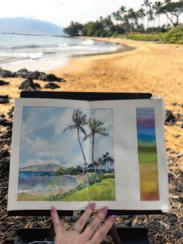
Watercolor Escape to Hawai’i
Capture Hawai’i’s dramatic skies, shimmering sea, and sunlit essence with expressive, flowing watercolors.
INSTRUCTOR: Cindy Briggs
ONLINE: Wed., Nov. 19 and Thurs., Nov. 20, 6 p.m.; CODE 1E0-AAD; Members $135; Nonmembers $150

Gel Prints Beyond the Ordinary
Oppose and defy the ordinary and mundane to create mixed-media gems using an array of resist materials on gel plates.
INSTRUCTOR: Sharon Robinson
IN PERSON: Sun., Oct. 5 and 12, 12 p.m.; Ripley Center; CODE 1E0-0ZS; Members $85; Nonmembers $110
INSTRUCTOR: Delna Dastur
ONLINE: Thurs., Sept. 18–Nov. 13, 12 p.m., no class Oct. 2; CODE 1E0-ABR; Members $260; Nonmembers $295
INSTRUCTOR: Marcie Wolf-Hubbard
ONLINE: Mon., Oct. 27–Nov. 10, 1:30 p.m.; CODE 1E0-AAP; Members $150; Nonmembers $175
Discover the essence of what you see in landscapes near and far and respond by creating art in collage and mixed media. You are introduced to the materials, tools, and technologies to use.
INSTRUCTOR: Marcie Wolf-Hubbard
ONLINE: Thurs., Oct. 23–Nov. 20, 1:30 p.m.; CODE 1E0ABU; Members $175; Nonmembers $210
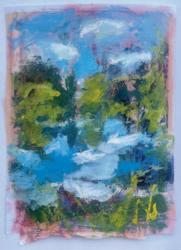
INSTRUCTOR: Ann Richards
IN PERSON: Tues., Sept. 16–Oct. 28, 6:30 p.m., no class Sept. 23; Ripley Center; CODE 1E0-ABB; Members $155; Nonmembers $190
INSTRUCTOR: Susana Romero
IN PERSON: Sat., Sept. 20–Oct. 11, 1:30 p.m.; Ripley Center; CODE 1E0-ACA; Members $160; Nonmembers $185
When Good Patterns Go Bad Avoiding and Fixing Knitting Mistakes
INSTRUCTOR: Ann Richards
IN PERSON: Tues., Nov. 18, 6:30 p.m.; Ripley Center; CODE 1E0-ABP; Members $45; Nonmembers $60
Make a Table Runner
Level up your beginning weaving skills and create a distinctively textured, colorful table runner on your rigid heddle loom. Build on the plain weave structure with striking warp and weft float techniques.
INSTRUCTOR: Tea Okropiridze
ONLINE: Tues., Sept. 30–Oct. 14, 6:30 p.m.; CODE 1E0-0ZK; Members $115; Nonmembers $140
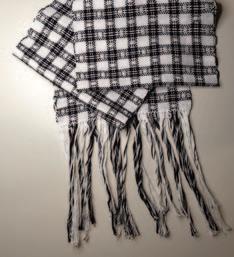
By Tea Okropiridze
Embroidery on Paper and Photographs
INSTRUCTOR: Patricia Howard
ONLINE: Sat., Oct. 4 and 11, 12 p.m.; CODE 1E0ACK; Members $110; Nonmembers $135
for the Non-perfectionist
INSTRUCTOR: Lauren Kingsland
ONLINE: Sun., Nov. 9–23, 3 p.m.; CODE 1E0-0ZM; Members $125; Nonmembers $150
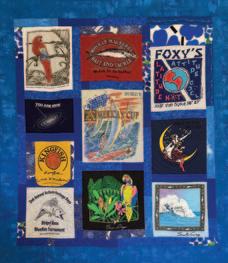
Create spectacular color combinations in your quilts as you build your color theory vocabulary and learn how to beautifully incorporate many types of printed fabric.
INSTRUCTOR: Lauren Kingsland
ONLINE: Sat., Oct. 4–Nov. 8, 10:30 a.m., no class Oct. 25; CODE 1E0-0ZL; Members $210; Nonmembers $245
Studio Arts classes are taught by professional artists and teachers. View detailed class descriptions and supply lists at SmithsonianAssociates.org/studio
INSTRUCTOR: Marcie Wolf-Hubbard IN PERSON: Sun., Dec. 7, 10:30 a.m.; Ripley Center; CODE 1E0-ACY; Members $170; Nonmembers $185
INSTRUCTOR: Arrin Sutliff
ONLINE: Wed., Sept. 17–Oct. 29, 7:30 p.m., no class Oct. 1; CODE 1E0-ABL; Members $160; Nonmembers $195 Related program: Famous Orchids in History, p. 29
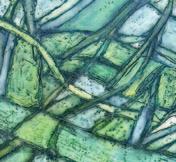


INSTRUCTOR: Mïa Vollkommer
ONLINE: Thurs., Sept. 18–Oct. 9, 7 p.m.; CODE 1E0-ABX; Members $195; Nonmembers $215
INSTRUCTOR: Bonnie Fitzgerald
ONLINE: Tues., Oct. 14–Nov. 4, 6:30 p.m.; CODE 1E0-0ZU; Members $165; Nonmembers $190
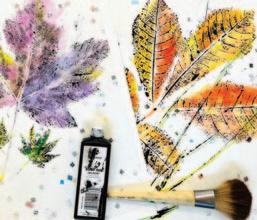
Inspired by the Collections
Cold Connections and Alternative Materials
Botanical Prints in Sumi Ink and Watercolor
INSTRUCTOR: Sue Fierston
ONLINE: Sat., Nov. 8, 10 a.m.; CODE 1E0-ACP; Members $80; Nonmembers $95
The jewelry in the Cooper Hewitt’s Susan Grant Lewin Collection embodies the ingenious use of alternative materials. Using the collection as an inspiration, students learn to refine readily available trash items into unique works of contemporary jewelry.
INSTRUCTOR: Mïa Vollkommer
ONLINE: Sat., Sept. 27–Nov. 15, 12 p.m., no class Oct. 18 and 25; CODE 1E0-0ZV; Members $225; Nonmembers $260


Read more about programs in this guide on the website. Search by code or date. Expanded program descriptions, presenters’ information, and more at SmithsonianAssociates.org

INSTRUCTOR: Karen Cadogan
ONLINE: Sat., Nov. 15, 10:30 a.m.; CODE 1E0-ACQ; Members $95; Nonmembers $115
Select a pattern inspired by early 20th-century paper ornaments and learn simple metal embossing to transform an aluminum can into a holiday ornament or objet d’art for everyday decorating.
INSTRUCTOR: Mïa Vollkommer
ONLINE: Sat., Dec. 6, 12 p.m.; CODE 1E0-0ZX; Members $70; Nonmembers $85

Unlike the museums, Smithsonian Associates is not federally funded and relies entirely on donations and essential membership support to bridge the gap between program expenses and registration revenue. If the joy of learning enriches your life, please consider a charitable gift in support of the vibrant educational experiences that open the Smithsonian's world of knowledge to audiences across the country.
n n n
Introduction to Photography
INSTRUCTOR: Andargé Asfaw
TWO IN-PERSON OPTIONS: Tues., Sept. 16–Nov. 18, 3 p.m., no class Sept. 23 and Nov. 11 (CODE 1E0-AAX); Tues., Sept. 16–Nov. 18, 6:30 p.m., no class Sept. 23 and Nov. 11 (CODE 1E0-AAZ); Ripley Center; Members $250; Nonmembers $285
On-Location Photography
INSTRUCTOR: Joe Yablonsky
IN PERSON: Sun., Oct. 5–Nov. 16, 1:45 p.m., Ripley Center; CODE 1E0-ACU; Members $205; Nonmembers $240
The Exposure Triangle
INSTRUCTOR: Joe Yablonsky
IN PERSON: Tues., Oct. 7–28, 6 p.m.; Ripley Center; CODE 1E0-ABD; Members $160; Nonmembers $185
World Art History Certificate elective: Earn ½ credit
Cyanotype: Photography with the Sun
INSTRUCTOR: Patricia Howard
ONLINE: Sat., Sept. 20 and 27, 12 p.m.; CODE 1E0-ACG; Members $85; Nonmembers $110
Night Photography in Washington, D.C.
INSTRUCTOR: Joe Yablonsky
ONLINE: Thurs., Nov. 10 and 17, 6:30 p.m.; CODE 1E0-AAU; Members $90; Nonmembers $115 (Note: The first session of this class is conducted on Zoom, and the second session is in person in Washington, D.C.)

n n n n
Figure Sculpture
INSTRUCTOR: George Tkabladze
IN PERSON: Tues., Sept. 16–Nov. 18, 6 p.m., no class Sept. 23 and Nov. 11; Ripley Center; CODE 1E0-ABA; Members $315; Nonmembers $350
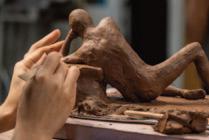
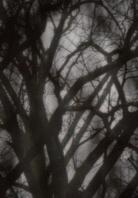
Film Noir Photography
Study the nuanced balance of value and light and shadow as you learn to apply the techniques of film noir style to your photography.
INSTRUCTOR: Lewis Katz
ONLINE: Mon., Oct. 20–Nov. 17, 7 p.m., no class Nov. 10; CODE 1E0-AAH; Members $135; Nonmembers $160
Get out in your city or town and capture the unique qualities and attractions of your downtown area. Discuss techniques to capture vintage storefronts, signage, brickwork, alleys, mannequins, and reflections in the first session and participate in a photo review during the second session.
INSTRUCTOR: Joe Yablonsky
ONLINE: Thurs., Nov. 6 and 13, 6:30 p.m.; CODE 1E0-AAJ; Members $95; Nonmembers $120

Introduction to Foundational Hand Calligraphy
INSTRUCTOR: Sharmila Karamchandani
ONLINE: Sat., Sept. 20–Oct. 11, 1:30 p.m.; CODE 1E0-ACF; Members $140; Nonmembers $165
to Pointed-Pen Calligraphy
INSTRUCTOR: Sharmila Karamchandani
ONLINE: Sat., Nov. 1–22, 1:30 p.m.; CODE 1E0-ACN; Members $140; Nonmembers $165
Holiday Cards Using Pointed-Pen Calligraphy
Step up your card- and gift-giving game this holiday season with hand-drawn holiday-themed illustrations and borders using pointed-pen flourishes.
INSTRUCTOR: Sharmila Karamchandani ONLINE: Sat., Dec. 6, 1:30 p.m.; CODE 1E0-0ZW; Members $70; Nonmembers $85

Smithsonian Associates expert-led Study Tours offer one-of-a-kind in-person experiences. They’re the perfect way to learn more about the places and topics that fascinate you, and you’re sure to discover plenty of new favorites along the way.
Founded in 1775, the United States Navy began as a modest fleet but rapidly expanded into a formidable force. From wooden sailing ships during the American Revolution to today’s nuclear-powered aircraft carriers and cutting-edge submarines, the Navy has evolved over 250 years. It stands as one of the world’s most powerful and respected maritime forces. Spend the day exploring the rich history and traditions of the Navy.

Upon arrival in Annapolis, Maryland, begin your visit with a guided walking tour of the 180-year-old U.S. Naval Academy. Your guide shares stories of the academy’s past, details of its rigorous admission process, and insights into the life of a midshipman. Key stops include the domed Naval Academy Chapel, Bancroft Hall with its 1,639 dorm rooms, and Herndon Monument, the granite obelisk that first-year students work together to scale at the end of their freshman year. Following the tour, hear from staff about what it takes to become a commissioned officer in the U.S. military and how midshipmen are prepared for their post-graduation assignments.
Lunch is served at the Naval Academy Club. Conclude time on campus at the U.S. Naval Academy Museum in Preble Hall, which features compelling exhibits on the history of sea power, the evolution of the Navy, and the academy’s critical role in developing future leaders for the Navy and Marine Corps.
Enjoy a scenic afternoon cruise offering a unique perspective of the academy and Annapolis Harbor. On this narrated tour, learn about Annapolis’ history as a seaport, explore the region’s waterways, and take in stunning views of the Chesapeake Bay Bridge. Fri., Aug. 8, 8 a.m.–6:30 p.m.; by bus; detailed tour information on website; CODE 1CD-059; Members $224; Nonmembers $285
Please visit SmithsonianAssociates.org to view the FAQ on Health & Safety guidelines for in-person programs
President Franklin Roosevelt’s New Deal left a tangible mark on the United States, with over 500 public works projects in Washington, D.C., alone. Join author David Taylor for a walking tour in Washington that focuses on landmarks, art, and other still-visible signs from the New Deal period not seen on the previous tour.

Begin at the John Adams Building of the Library of Congress to discuss the public sculptures and dramatic doors by Lee Lawrie, a renowned architectural sculptor. Highlights along the route include murals by 20th-century masters at the old Social Security Administration building; the Bureau of Engraving & Printing annex, described in 1938 as the world’s largest reinforced concrete factory-scale structure; and a discussion of New Deal renovations on the National Mall. Conclude at the Jefferson Memorial, designed by John Russell Pope and dedicated by Roosevelt himself amid a public debate about the role of public works.
Taylor is the author of Soul of a People: The WPA Writers’ Project Uncovers Depression America
TWO OPTIONS: Fri., Sept. 19 (CODE 1CW-B06); Fri., Sept. 26 (CODE 1CW-C06); 10 a.m.–12 p.m.; detailed tour information on website; Members $55; Nonmembers $70
World Art History Certificate elective: Earn ½ credit
Fallingwater and Kentuck Knob in the Laurel Highlands
Frank Lloyd Wright, one of America’s most innovative architects, experimented with new ways to design homes and integrate them into nature. Fallingwater and Kentuck Knob are prime examples of this organic architecture. See them both when you travel to the scenic Laurel Highlands of Pennsylvania for a day with Bill Keene, a lecturer on architecture, urban history, and city planning.
Fallingwater, perhaps Wright’s best-known structure, was designed in 1936 as a mountain retreat for the Kaufmann family of Pittsburgh. Cantilevered over a waterfall, the home is one of the most frequently photographed works of architecture. It is also the only major Wright house with its setting, original furnishings, and artworks intact. And it is one of 26 UNESCO World Heritage Sites in the United States.
Constructed of Tidewater red cypress and native fieldstone, the house on Kentuck Knob appears almost a part of the mountain on which it is built. Designed in 1953 for the I.N. Hagan family, Kentuck Knob now houses furnishings and art of the current owners, Lord Peter and Lady Hayat Palumbo. Sun., Sept. 14, 7 a.m.–9:30 p.m.; by bus; detailed tour information on website; CODE 1CD-060; Members $250; Nonmembers $310
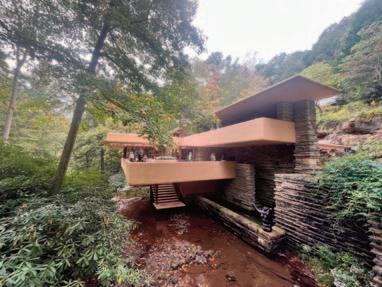
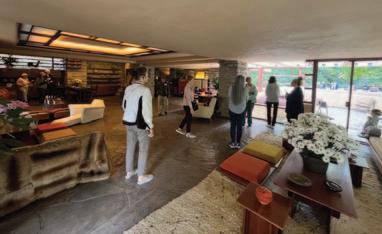
Please visit SmithsonianAssociates.org to view the FAQ on Health & Safety guidelines for in-person programs
Walking Tour
Arlington National Cemetery is the final resting place of over 400,000 American veterans and family members. As the largest military cemetery in the world, it preserves the history of the United States’ past. Carolyn Muraskin, founder of DC Design Tours, leads a visit to the 640-acre cemetery that includes stops at the graves of President John F. Kennedy and his brother Robert F. Kennedy, Arlington House, and the Tomb of the Unknown Soldier.
Since 1864, Arlington National Cemetery has served as the final resting place for veterans of every military conflict. Learn about the fraught origins of the cemetery in the midst of the Civil War, view the original home of the Custis-Lee family, and enjoy beautiful vistas across the Potomac River of Washington, D.C. Visit two presidential burial sites: those of Kennedy, including the eternal flame, and William Howard Taft. See the changing of the guard at the Tomb of the Unknown Soldier.
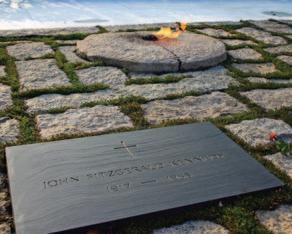
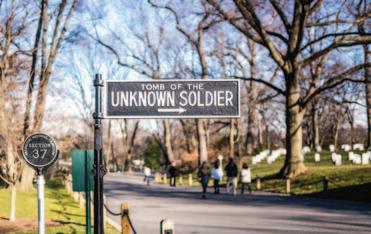
THREE OPTIONS: Thurs., Sept. 18 (CODE 1CW-A07); Fri., Sept. 19 (CODE 1CW-B07); Sat., Sept. 20 (CODE 1CW-C07); 10 a.m.–12:30 p.m.; detailed tour information on website; Members $50; Nonmembers $65
Read more about programs in this guide on our website. Search by code or date. Expanded program descriptions, presenters’ information, and more at SmithsonianAssociates.org.

Bay
Spend an unforgettable day exploring the rich history of the Chesapeake Bay with regional historian Hayden Mathews. The journey begins as Mathews weaves together the geological, environmental, maritime, cultural, and architectural threads that have shaped the region. This legacy comes to life as you explore historic Chestertown, Maryland, and embark on a 2.5-hour sail aboard the Sultana, a replica 1768 topsail schooner.
Founded in 1704, Chestertown enjoyed a lucrative maritime trade that fueled the local economy and funded construction of the Georgian brick mansions that still line the streets. The original Boston-built Sultana patrolled the coastline of colonial North America in the 18th century, enforcing the hated Townsend Acts or “tea taxes.” The replica Sultana was built by the city’s Sultana Educational Foundation to serve as a floating classroom where the public can learn about regional maritime history and have a hands-on experience focused on Chesapeake Bay ecology.
Meet Chris Cerino, a former Chestertown mayor and vice president of the Sultana Education Foundation, who leads a walking tour of the town’s National Register Historic District in which he spotlights buildings of special interest and shares stories about local history. The tour concludes at the headquarters of the foundation, where Cerino orchestrates a unique multimedia presentation on the bay’s cultural and natural histories.
Participants have midday lunch at a restaurant and have afternoon free time following the last tour and sailing.
Sun., Sept. 21, 7:45 a.m.–6:30 p.m.; by bus; detailed tour information on website; CODE 1ND-016; Members $225; Nonmembers $285
Please visit SmithsonianAssociates.org to view the FAQ on Health & Safety guidelines for in-person programs
Walking Tour
Discover what it takes to keep the Smithsonian’s many gardens and interior plant displays looking their best all year round. Smithsonian horticulturist Vickie DiBella takes you on a behind-the-scenes tour of the Smithsonian Gardens Greenhouse Facility in Suitland, Maryland, whose greenhouses provide plants for the institution’s gardens and horticultural exhibits.
Learn how staff care for the acres of annual bedding plants destined for the Smithsonian’s gardens, as well as the huge tropical specimens that hibernate for the winter at the greenhouses. The 10-acre facility includes growing areas, exterior storage, and greenhouses devoted to tropical plants, interior display plants, and nectar plants used for the Butterfly Pavilion at the National Museum of Natural History.

Get a close-up look at the thousands of plants in the Smithsonian Orchid Collection. Find out about the environmental control systems needed to nurture all the plants and get a preview of the plants that will add their color to the Smithsonian’s fall displays.
Thurs., Sept. 25, 10 a.m.–12 p.m.; detailed tour information on website; CODE 1CS-006; Members $50; Nonmembers $65
Read more about programs in this guide on our website. Search by code or date. Expanded program descriptions, presenters’ information, and more at SmithsonianAssociates.org.
Some 160,000 soldiers, both Union and Confederate, fought in the Battle of Gettysburg, one of the bloodiest battles of the Civil War. For three days, farmers, teachers, factory workers, and students turned soldiers—many of whom had never picked up a weapon before the war—confronted the horrors of battle. Historian Christopher Hamner leads a journey across the hallowed grounds of Gettysburg, exploring soldiers’ personal stories.
Beginning on the battlefield, explore sites like Little Round Top, Devil’s Den, and East Cemetery Hill while discussing the psychological toll of combat and living in the trenches. A visit to the Seminary Ridge Museum and Education Center adds another layer to understanding the soldiers’ experience. The cupola of the Lutheran Seminary at Gettysburg served as a key lookout for Union Brig. Gen. John Buford and Lt. Aaron Jerome. From July 1 to July 5, the building was held by Confederates, then used to house wounded Union soldiers. After the Confederate retreat, the Union army reclaimed it, turning it into one of Gettysburg’s largest field hospitals.
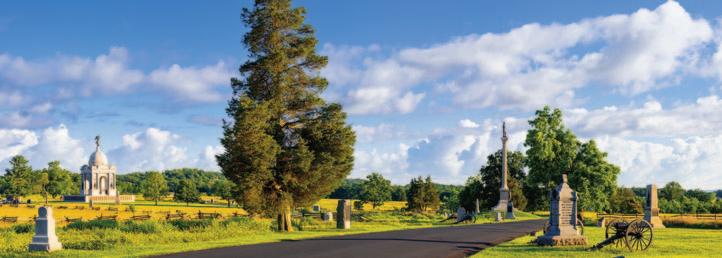
Lunch is served at Dobbin House Tavern, a historic landmark built in 1776. During and after the battle, the tavern was repurposed as a temporary field hospital.
Sun., Sept. 28, 8 a.m.–6:30 p.m.; by bus; detailed tour information on website; CODE 1CD-061; Members $211; Nonmembers $271
Please visit SmithsonianAssociates.org to view the FAQ on Health & Safety guidelines for in-person programs
Walking Tour
Nature at Its Best
Step into the wild at Jug Bay Wetlands Sanctuary, where nature unfolds in vivid detail just 25 miles from Washington, D.C. Wander through a landscape of 70foot-tall tulip trees and fragrant sassafras saplings, home to graceful swallowtail butterflies, curious river otters, and slow-moving box turtles.
Spend the day with naturalist Liana Vitali and a team of volunteers as you explore the sanctuary’s rich mosaic of ecosystems. Stretching across 1,700 acres of woodlands, wetlands, and meadows, Jug Bay offers a glimpse into one of the most biologically diverse areas along the Patuxent River.
Venture along some of the sanctuary’s 19 miles of scenic trails—binoculars in hand—to spot any of nearly 300 species of birds, from elegant osprey to seasonal waterfowl. Then climb aboard a pontoon boat for a ride through the wetlands to a hands-on archaeological dig site. Modeled after real excavations, this site invites you to uncover clues about a Native American settlement that thrived here more than 8,000 years ago. A catered lunch is included.

Sat., Oct. 11, 10 a.m.–4 p.m.; detailed tour information on website; CODE 1CS-001; Members $114; Nonmembers $175; NOTE: Tour participants meet on site

A guided hike through Seneca Regional Park, located upriver from Great Falls, Virginia, makes a fall morning an adventure. This mature forest is renowned for its vibrant fall colors, making it a perfect seasonal escape. Journey with interpretive naturalist Keith Tomlinson through upland forests that wind down into secluded ravines, finally reaching the woodlands along a deeply channelized stretch of the Potomac River.
Along the way, explore the forest’s natural history, with a special focus on landscape ecology—examining how topography, vegetation, and waterways shape this unique ecosystem. The area also holds historical significance as the site of early colonial canal construction, featured on the cover of National Geographic more than 35 years ago. Expect a moderate 3-mile hike on well-established but hilly trails. Wear sturdy footwear and be ready to immerse yourself in the rich natural and historical tapestry of this beautiful park.
TWO OPTIONS: Sun., Oct. 19 (CODE 1NW-A01); Sat., Oct. 25 (CODE 1NW-B01); 8–11 a.m.; detailed tour information on website; Members $60; Nonmembers $80
Please visit SmithsonianAssociates.org to view the FAQ on Health & Safety guidelines for in-person programs
World Art History Certificate elective: Earn ½ credit
Exploring Hillwood and The Phillips Collection
Tucked away in the charming, tree-lined neighborhoods of Washington, D.C., are two remarkable gems where art, history, and personal passion meet. Join art historian Judy Pomeranz for an insider’s look at Hillwood Estate, Museum & Gardens and The Phillips Collection—two of the city’s most intimate cultural landmarks, each housed in the former homes of their visionary collectors.
Start the day with opulence at Hillwood Estate, Museum & Gardens, former residence of heiress Marjorie Merriweather Post. A guided tour of the 36-room mansion showcases Post’s extensive art collection, which focuses on French and Russian imperial art. Marvel at some of the 17,000-plus objects, including two Fabergé eggs and exquisite French porcelain. Step into the estate’s gardens, set on 25 acres adjacent to Rock Creek. Stroll through the French parterre, reminiscent of a world of European elegance, and step across the bridge in the Japanese-style garden. Don’t miss the greenhouse, the source of the tropical plants that fill Hillwood with color and fragrance year-round. During a three-course lunch on the estate grounds, enjoy a special talk from a Hillwood curator.
Nestled in the historic Dupont Circle neighborhood, The Phillips Collection stands as America’s first museum dedicated to modern art. Established in 1921 by art collector and philanthropist Duncan Phillips, this private institution began as his residence and has evolved into a renowned museum housing over 5,000 works of modern and contemporary art. Docents lead you through the displayed collection, where you view works by Renoir, Rothko, O’Keeffe, and other luminaries, with a discussion of how the collection has grown.

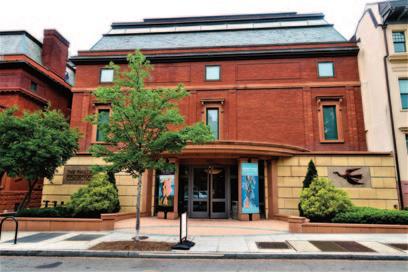
Thurs., Oct. 23, 8:30 a.m.–5:30 p.m.; by bus; detailed tour information on website; CODE 1CD-001; Members $236; Nonmembers $300


Rock Creek Park History Hike
Established in 1890, Rock Creek Park was the first national park created in a major city. More than 2,000 acres winding through Northwest Washington, D.C., were set aside as a refuge for wildlife and an escape for District residents. While the landscape feels natural today, much of the park was meticulously laid out by a noted landscape architectural firm, Olmsted Brothers. In addition to its natural beauty, Rock Creek Park contains historic structures, memorials, ruins, and other remnants of the past.
The tour begins outside the Smithsonian’s National Zoo before plunging into Rock Creek Park via a little-known entrance. Follow the course of an abandoned road to a secluded stone mansion, one of the oldest structures in the park. Then trek across the park’s western ridge before dipping down into the valley to see Peirce Mill, built in 1829, and going up along the Theodore Roosevelt Side Trail to beautiful Boulder Bridge.
Passing the ruins of another old mill, stroll back along Beach Drive before hiking one more stretch on a recently renamed trail while tour leader Carolyn Muraskin, founder of DC Design Tours, shares its history. Finally, emerge onto bustling Connecticut Avenue and wrap up at the Cleveland Park Metro station.
THREE OPTIONS: Thurs., Oct. 23 (CODE 1CW-A02); Fri., Oct. 24 (CODE 1CW-B02); Sat., Oct. 25 (CODE 1CW-C02); 9:30 a.m.–12:30 p.m.; detailed tour information on website; Members $55; Nonmembers $70
Please visit SmithsonianAssociates.org to view the FAQ on Health & Safety guidelines for in-person programs
World Art History Certificate elective: Earn ½ credit
Bus Tour
Are you a mystery fan? Experience a unique immersive adventure with study leader and storyteller Paul Glenshaw inspired by his Smithsonian Associates’ Art + History series. Here’s the twist: Participants register for a full-day tour without knowing where the journey will lead.
Travel with Glenshaw to three to five distinctive sites around the Washington, D.C., area as he reveals hidden stories, lesser-known facts, and fascinating connections among art, architecture, and the historical moments they represent. The day includes a 3-course meal at a leading D.C. restaurant. The tour’s itinerary is provided to registrants as they gather at the departure point (which won’t be a mystery). Are you game for this artfully secretive—but rewarding—excursion?
Sat., Nov. 8, 8:30 a.m.–6:30 p.m.; by bus; detailed tour information on website; CODE 1ND-001; Members $215; Nonmembers $275
Read more about programs in this guide on our website. Search by code or date. Expanded program descriptions, presenters’ information, and more at SmithsonianAssociates.org.
Arts journalist Richard Selden continues his series of overnight trips to New York City’s outer boroughs with this visit to the largest of all, Queens—home of the Mets, the U.S. Open, and two of the metropolitan area’s three major airports. Site of the fictional Astoria residence of TV’s Archie and Edith Bunker and the actual former Corona residence of Louis and Lucille Armstrong, Queens in recent decades has transformed into the most ethnically diverse of the five boroughs. The Number 7 train on the Flushing Line is now nicknamed the International Express.
Among the jewels of Queens on the itinerary are Flushing Meadows Corona Park, site of the 1939 and 1964 World’s Fairs; the Museum of the Moving Image, a movie and television museum located in the historic (and reborn) Astoria Studio complex; the Noguchi Museum, where the full range of the Modernist sculptor’s work is displayed; and the Louis Armstrong House Museum. To sample the borough’s international cuisine, an Asian lunch in Flushing and a Greek dinner in Astoria are included.

The overnight accommodations spotlight another of the borough’s standouts: the TWA Hotel. Eero Saarinen’s landmark 1962 TWA Flight Center at Idlewild (now JFK) airport was restored and reimagined as a first-class hotel that celebrates the Jet-Age glamour of the 1960s.
Sun., Nov. 9, 7 a.m.–Mon., Nov. 10, 9 p.m.; by bus; detailed tour information on website; CODE 1NNQUE; Members $685; Nonmembers $850
Please visit SmithsonianAssociates.org to view the FAQ on Health & Safety guidelines for in-person programs
2-Day Tour
Step back in time to the land of the pharaohs and take a journey through two of New York’s most prestigious cultural institutions: the Metropolitan Museum of Art and the Brooklyn Museum. Each museum offers a captivating lens into the world of ancient Egypt.
The Brooklyn Museum houses a rich, thoughtfully curated Egyptian collection that illuminates the daily life, religious beliefs, and funerary practices of ancient Egyptians. On your guided visit, learn about Charles Edwin Wilbour, a self-taught Egyptologist whose numerous acquisitions in Egypt, including eight Elephantine papyri, form the core of the Brooklyn Museum collection. Visit the Assyrian collection, which features 12 huge reliefs from the palace of Ashur-nasir-pal II at Nimrud, excavated by A. H. Layard in the 1840s.
The Metropolitan Museum of Art boasts the most extensive collection of Egyptian antiquities in North America, featuring monumental sculptures, intricate artifacts, and the awe-inspiring Temple of Dendur, completed by 10 B.C.E. by the Roman emperor Augustus. A full-day visit includes a guided tour through the Lila Acheson Wallace Galleries of Egyptian Art with your study leader. Learn how the artifacts illuminate many of the best-known stories in the Bible, especially from the book of Exodus. The visit also includes a docent-led tour of highlights of the museum’s collections and time to view other galleries, including the relatively recently renovated Byzantine and medieval wing.

Biblical scholar and historian Gary Rendsburg leads this exploration of ancient Egyptian culture. Sun., Nov. 16, 7:30 a.m.–Mon., Nov. 17, 10:30 p.m.; by bus; detailed tour information on website; CODE 1CN-EGY; Members $653; Nonmembers $871
Read more about programs in this guide on our website. Search by code or date. Expanded program descriptions, presenters’ information, and more at SmithsonianAssociates.org.
Led by regional historian Hayden Mathews, step into a world of elegance and holiday splendor in a journey through the historic Brandywine Valley, where the legacy of the du Pont family comes to life in grand estates filled with seasonal decorations. Spanning Pennsylvania and Delaware, the region is home to some of the most opulent mansions and gardens in the country, each with a connection to the du Pont family, who shaped the cultural and economic landscape of the region, leaving behind a heritage of architecture, art, and horticulture.
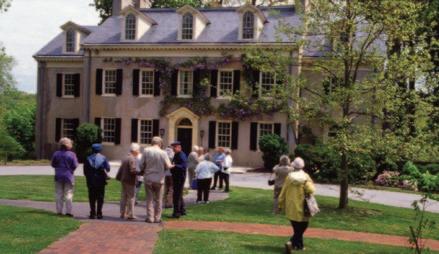

At Hagley Museum and Library, birthplace of the du Pont legacy (and a Smithsonian Affiliate), explore the original gunpowder works and the family’s first home in America, decorated for the season. Visit Winterthur Museum Garden and Library, the former estate of Henry Francis du Pont, where seasonal displays complement an outstanding collection of American decorative arts.
The Brandywine Museum of Art, housed in a historic grist mill, showcases works by the Wyeth family and features holiday decorations, including its famous model train exhibition. The tour concludes at Longwood Gardens, where more than 500,000 lights, spectacular fountain shows, and floral displays make for a memorable experience. An overnight stay at the charming Mendenhall Inn offers a chance to relax and reflect on a visit filled with festive beauty and rich history.
Sun., Dec. 7, 7:30 a.m.–Mon., Dec. 8, 9 p.m.; by bus; detailed tour information on website; CODE 1NN-BRV; Members $689; Nonmembers $915


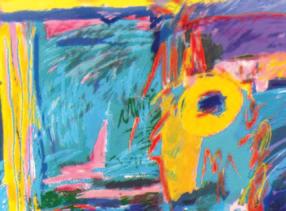
Effective April 1, 2025
Members-only priority program registration before programs go on sale to the public (some exclusions apply)
Ability to purchase one registration per program at the discounted member price
Subscription to the monthly Smithsonian Associates program guide
Subscription to the monthly Smithsonian Associates digital program guide
Access to members-only in-person and online programs
Access to free Associates in-person and online programs as available (notification sent via email)
3-day viewing access to Associates Encores recordings of online programs (some exclusions apply)
Subscription to the Smithsonian Associates Digital Digest
Ability to purchase up to four registrations per program at the discounted member price
Smithsonian magazine delivered to your home
Ability to purchase up to six registrations per program at the discounted member price
Member discounts on Art Collectors Program fine-art prints
Advance digital copy of the monthly Smithsonian Associates program guide
Two complimentary registrations for an online program, in-person lecture, or performance (value equal to $35 per registration or less)
Priority consideration for wait-listed programs (some exclusions apply)
Advance registration for high-demand programs (notification sent via email)
Ability to participate in Smithsonian Summer Camp registration lottery
Two complimentary registrations for a Smithsonian Insider event
No $3 phone order processing fees for program registrations conducted over the phone
Monthly donor preview digital communications for select upcoming programs
NEW: Registration access to complimentary Associates Insider Tours in Washington, D.C. (notification sent via email)
Copy of the Smithsonian’s annual report
Recognition on the Smithsonian Associates website, in the program guide’s annual donor list, and on the annual plaque at our headquarters in Washington, D.C.
One gift membership at the Explorer level to give to a family member or friend (restrictions apply)
Reserved seating at most Smithsonian Associates in-person programs
Invitations to backstage meet-and-greets at select Smithsonian Associates in-person programs
Dedicated concierge phone line for inquiries and program registration
Invitation for two to the prestigious annual Smithsonian Weekend
Recognition in the Smithsonian’s annual report
Four complimentary registrations for an online program or in-person lecture (value equal to $35 per registration)
Additional 20% discount on member prices for Art Collectors Program fine-art prints
Two gift memberships at the Explorer level to give to family members or friends (restrictions apply)
Special event invitations as available
Quarterly Director’s Roundtable digital communications (opportunities to gather in person when applicable)
Invitation to a private event with members of Associates’ leadership
Program Planner (New listings in red); (In-person programs•)
Thurs., Aug. 7, 14, and 21
Reflective Writing Workshops .....................................................................32
Mon., Aug. 18 and Sept. 29
The Age of World's Fairs
Sat., Aug. 23
Smithsonian Jazz Masterworks Orchestra •
Tues., Sept. 2–16
Write Into Art: Creative Writing Inspired by Visual Art
Wed., Sept. 3–24
Expressionism: The Art of Emotions
Thurs., Sept. 4–Nov. 13
Smithsonian Chorus • 17
Thurs., Sept. 4–25
Exploring Ancient Egypt
Thurs., Sept. 11 and 18
Elements of Fiction Writing
Sat., Oct. 4, Nov. 1, and Dec. 13
Reading Dante’s Divine Comedy
Sun., Oct. 5, Nov. 9, Dec. 7, and Jan. 11
Postwar Italian Cinema
Tues., Oct. 7–28
Ballet Music: The Soul of Movement
Tues., Oct. 7–Nov. 4 Impressionist and Post-Impressionist Painting in France
Wed., Oct. 8–29
Cave Art to the Renaissance
Thurs., Oct. 9–30
Exploring the Arts of Latin America
Wed., Oct. 15–Nov. 12 The History of the British Monarchy
Thurs., Oct. 16–30 Night and the Cities
Wed., Oct. 22–Nov. 19
History of Fantasy
Sat., Nov. 1 and 8 Masterpieces of the Middle Ages ..............................................................42
Nov. 3–24 Fairy Tales in Classical Music
Tues., Nov. 18–Dec. 16 Masterworks of the Choral Tradition ........................................................25
Tues., Nov. 18–Dec. 9
Borders
Sat., Nov. 15 Art Nouveau: New Style for a New Century 42 Fri., Dec. 12 Sonoma Uncorked .............................................................23
Tours—Single and Multi-Session•
Fri., Aug. 8 Anchors Aweigh 54
Sun., Sept. 14 Wright’s Pennsylvania Legacy 55
Thurs., Sept. 18 Arlington National Cemetery 55
Fri., Sept. 19 New Deal Project, Part 2 .................................................54 Arlington National Cemetery 55
Sat., Sept. 20 Arlington National Cemetery 55
Sun., Sept. 21 Historic Chestertown and the Schooner Sultana ....56
Thurs., Sept. 25 The Smithsonian Greenhouses 56
Fri., Sept. 26 New Deal Project, Part 2 54
Sun., Sept. 28 Gettysburg: The Battlefield and Beyond ....................57
Sat., Oct. 11 Jug Bay Wetlands Sanctuary: Nature at its Best 57
Fri., Oct. 17 Architecture on the Nation’s Front Lawn 3
Sat., Oct. 18 Architecture on the Nation’s Front Lawn 3 Sun., Oct. 19 Architecture on the Nation’s Front Lawn 4 Autumn Splendor in Seneca Regional Park ...............58
Thurs., Oct. 23 Private Visions, Public Treasures 58 Urban Oasis: Rock Creek Park History Hike 59
Fri., Oct. 24 Urban Oasis: Rock Creek Park History Hike 59
Sat., Oct. 25 Autumn Splendor in Seneca Regional Park 58 Urban Oasis: Rock Creek Park History Hike 59
Sat., Nov. 8 An Art + History Mystery Tour 59
Sun., Nov. 9 Jewels of Queens 60 Sun., Nov. 16 Unearthing Egypt 60 Sun., Dec. 7 Holidays in the Brandywine Valley 61
Please visit SmithsonianAssociates.org to view the FAQ on Health & Safety guidelines for in-person programs
Painting, Drawing, Mixed Media, Fiber Arts, Sculpture, Calligraphy, Other Media, Photography .
Please visit SmithsonianAssociates.org for more details
MEMBERSHIP Depending on your level of support, you will receive special benefits, including significant savings on most Smithsonian Associates program registrations and a monthly Smithsonian Associates program guide, and much more. Visit SmithsonianAssociates.org/join for more information. Become a member today!
Online.......................SmithsonianAssociates.org
Phone .........................202-633-3030, from 10 a.m. to 3 p.m. ET, Monday through Friday.
Phone registration orders are subject to a $3 handling fee.
Email CustomerService@SmithsonianAssociates.org
Mail Smithsonian Associates, P.O. Box 23293, Washington, D.C. 20026-3293
Phone 202-633-3030, from 10 a.m. to 3 p.m. ET, Monday through Friday.
Confirmed registrants receive an email from no-reply@zoom.us at least 24 hours prior to the program date that provides a link to join your session on Zoom.
All program registrations are subject to a 10% processing fee to defray administrative costs. Registrants will see this fee applied during the checkout process. Exclusions are transactions for Discovery Theater, Smithsonian Summer Camp, Studio Arts, and Study Tours.
Credit for cancellations or exchanges are only available for orders that cost more than $40. If in compliance with the specific guidelines below, credit is issued to your Smithsonian Associates account, not your credit card. Credits are non-transferable.
Important note: Cancelling your program in the Zoom personal link that you received does not initiate the Smithsonian Associates credit or refund process. Please contact Customer Service via email at least two weeks in advance to request a change to your registration
For all Smithsonian Associates online programs, study tours, and Studio Arts classes: If you wish to cancel or exchange an order costing more than $40, please contact Customer Service via email at least two weeks before the program date to request a credit. Please note that there is a $10 cancellation fee, as well as a cost adjustment when there is a price difference if you are applying your credit to another program.
Courses: To receive credit to your Smithsonian Associates account for a course, (excluding Studio Arts classes), please contact Customer Service via email at least two weeks before the first session. Credit will also be issued within two weekdays after the first session, provided that Customer Service is contacted within that period. Credit will be prorated to reflect the cost of the first session. No credit will be given after the second session.
REFUNDS are only issued when a program is cancelled or if it sells out before we receive your order.
CHANGES I N PUBLISHE D SCHE DU LES Smithsonian Associates reserves the right to cancel, substitute speakers and session topics within a course, and reschedule any program, if needed. Occasionally, a time or date of a program must change after it has been announced or registrations have been reserved. Participants are notified by email. Check SmithsonianAssociates.org for latest updates.
MOVING? If you are receiving our print publications, please email or write us with your new information and allow 6 weeks for the change of address to take effect.
PHOTOGRAPHY AND VIDEO Smithsonian Associates reserves the right to take photographs or videos (or audio) during programs for the educational and promotional purposes of the Smithsonian Institution or authorized third parties. By attending a program, the participant agrees to allow their likeness to be used by Smithsonian Associates or Smithsonian-authorized third parties without compensation to the participant. Participants who prefer that their voice and/or image not be used must notify us in writing prior to the beginning of the program.




